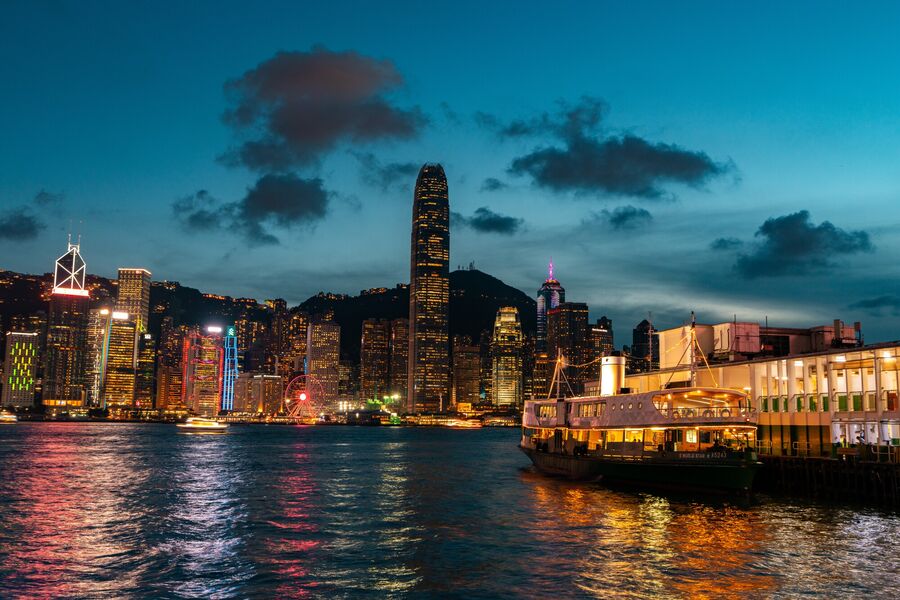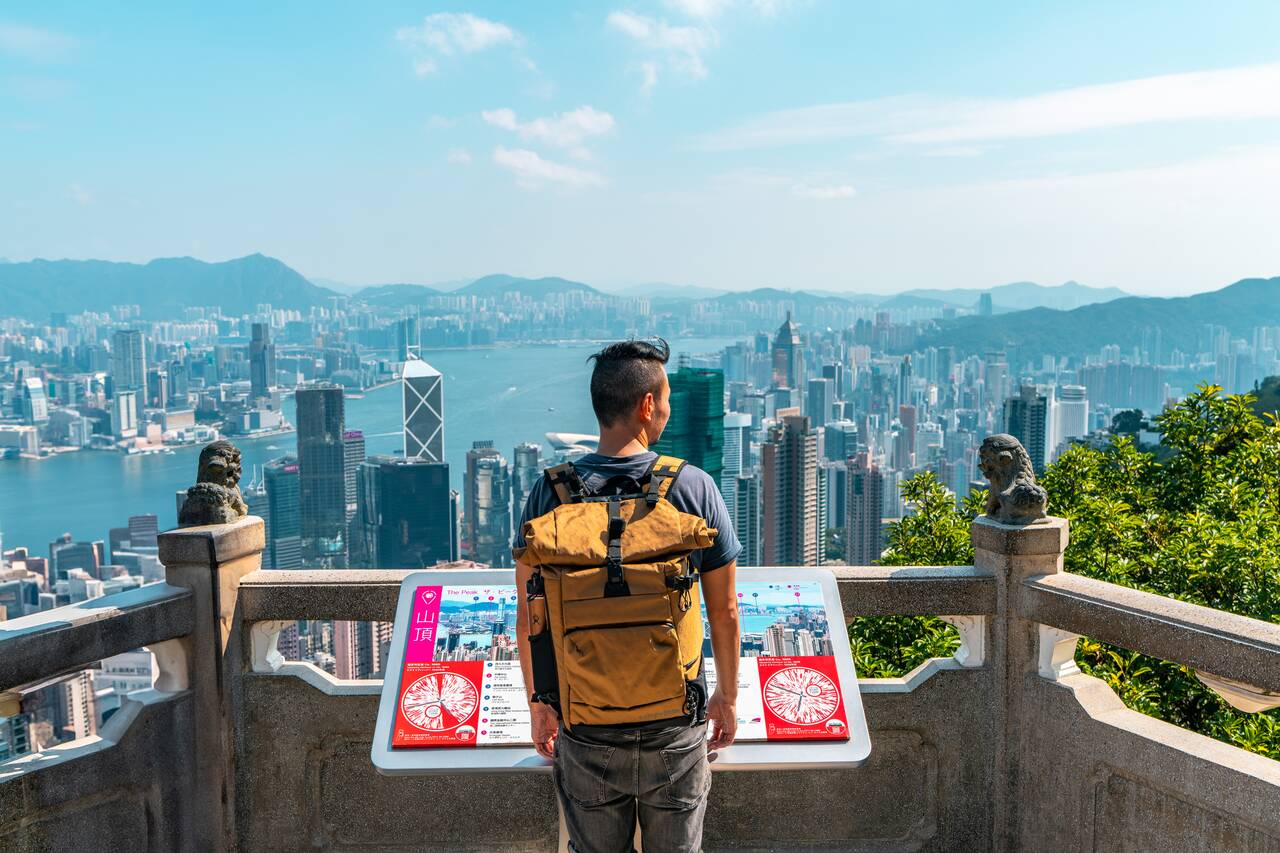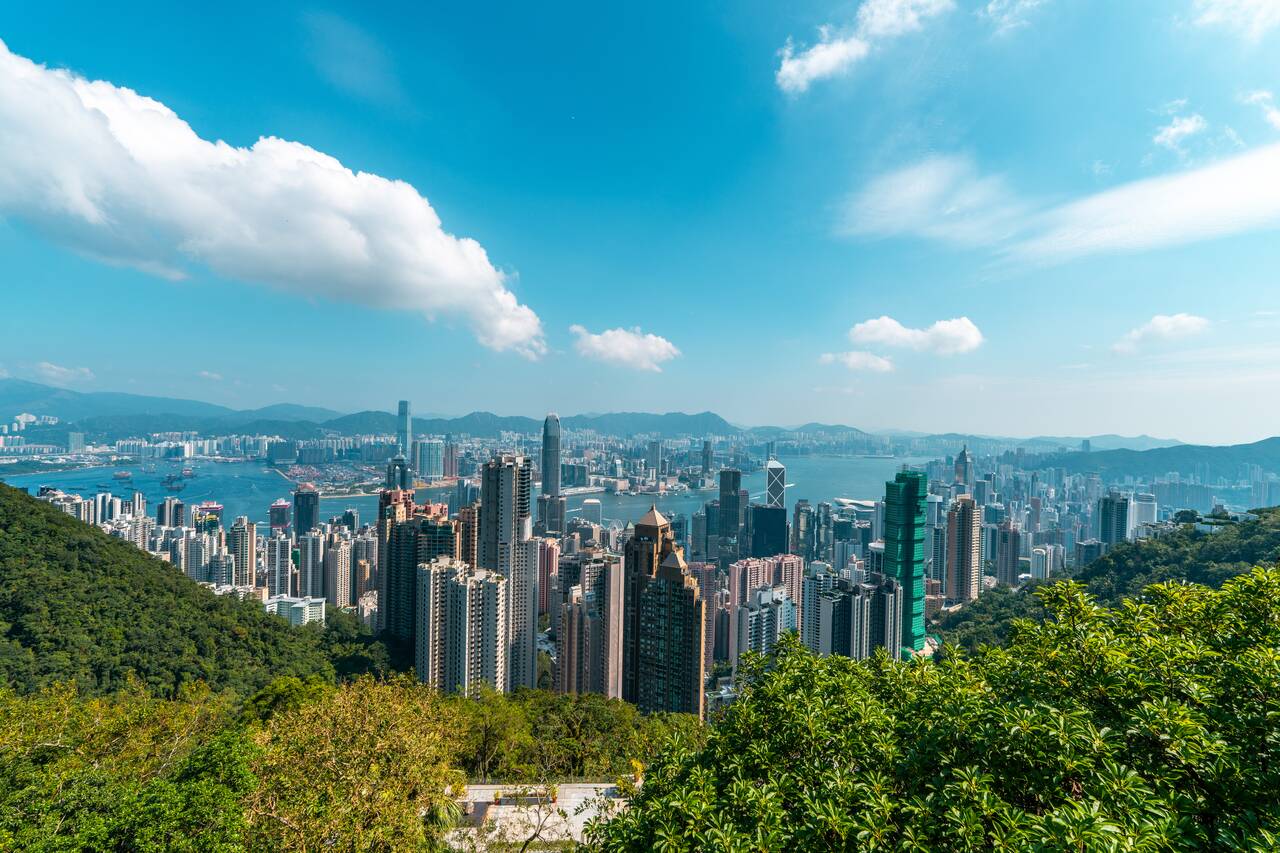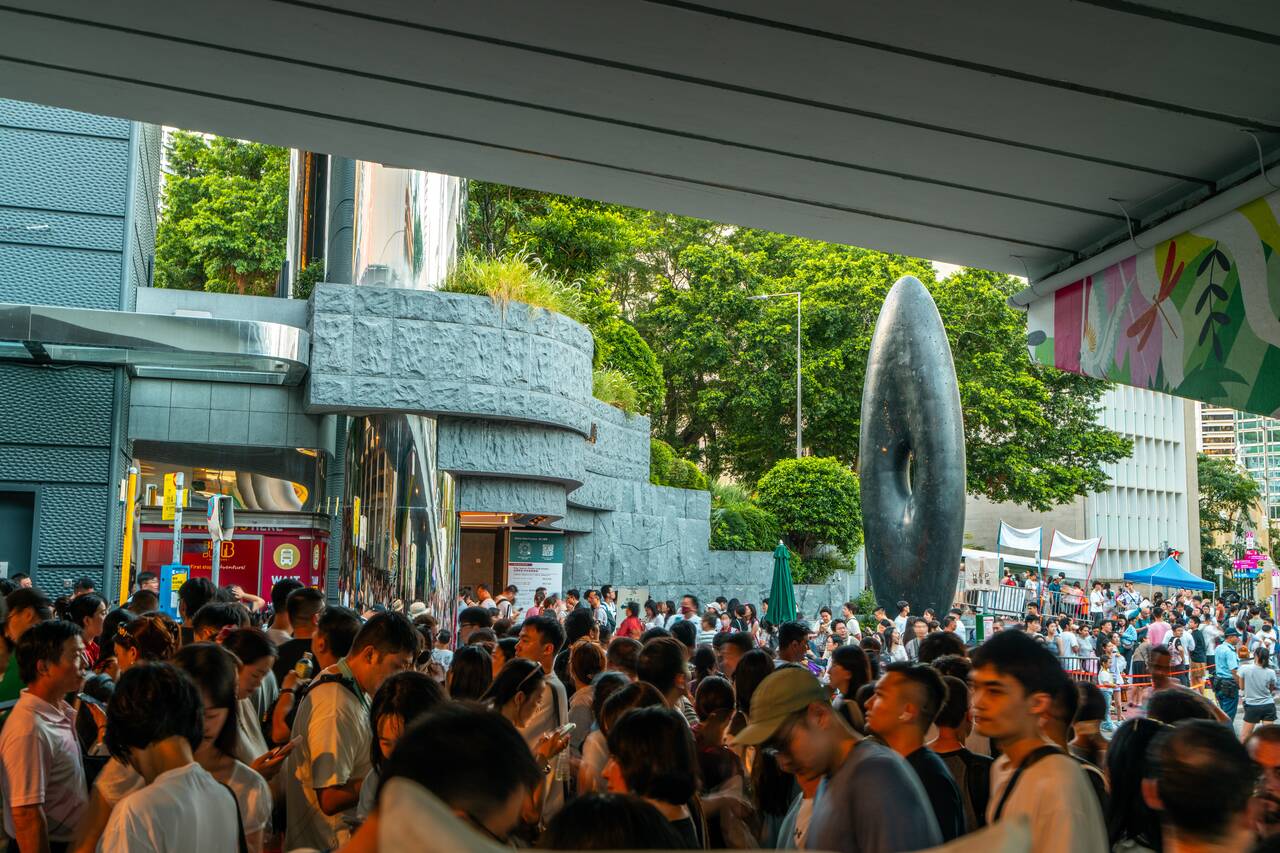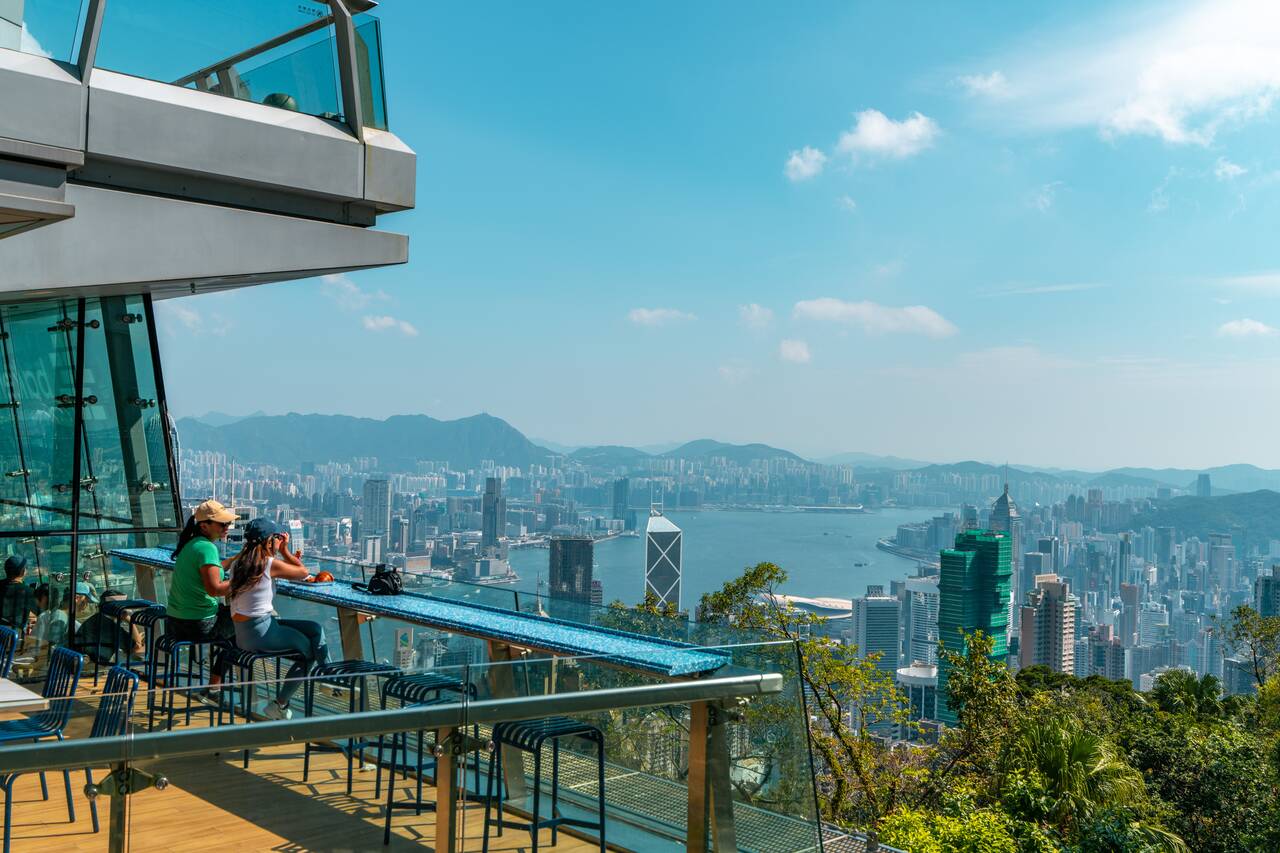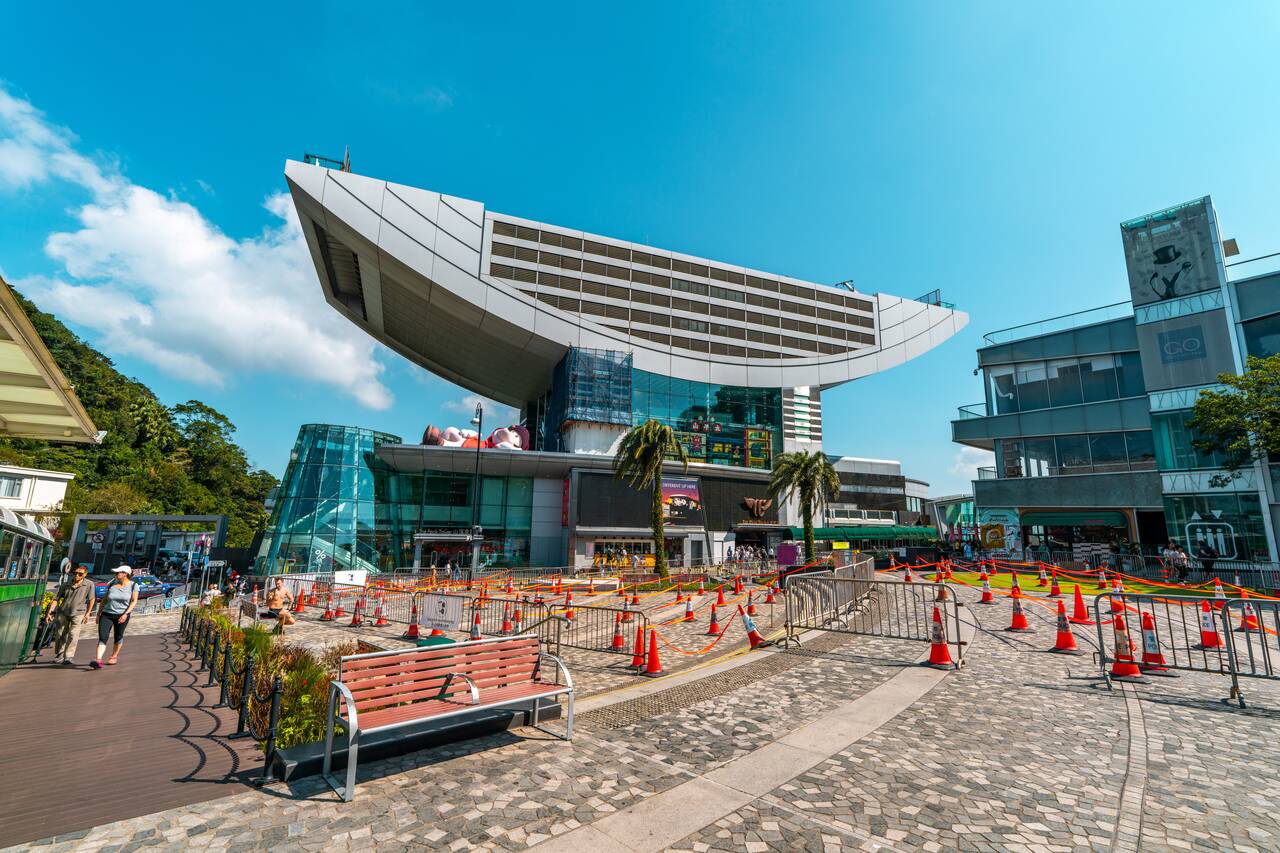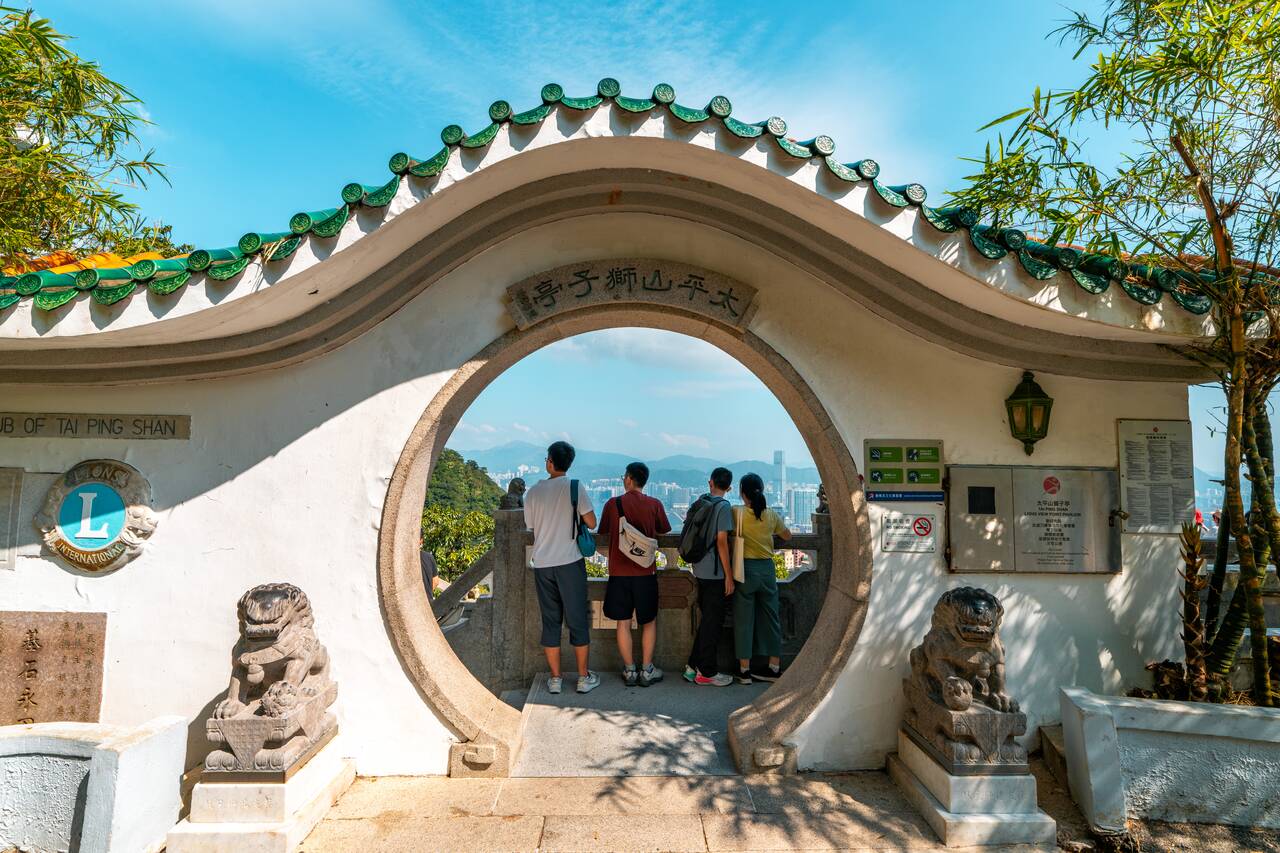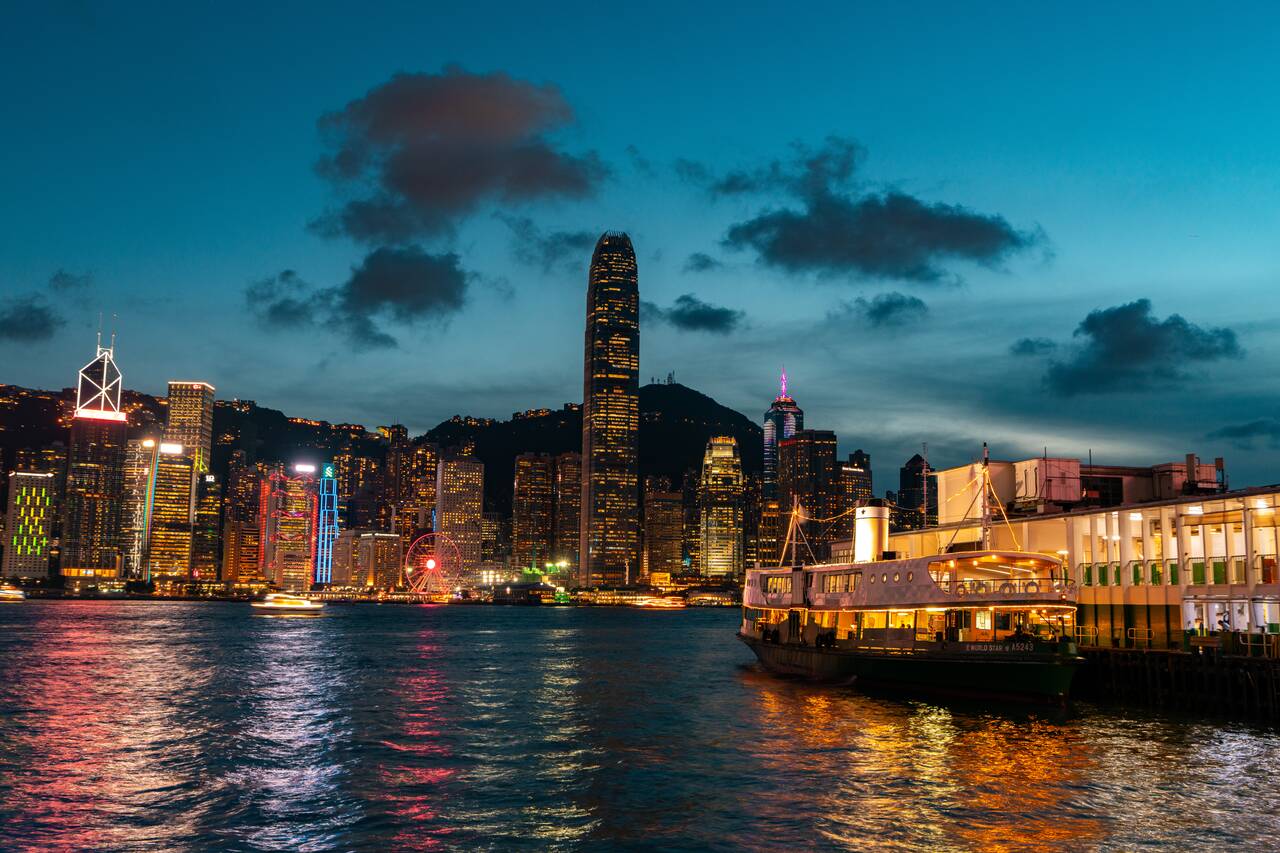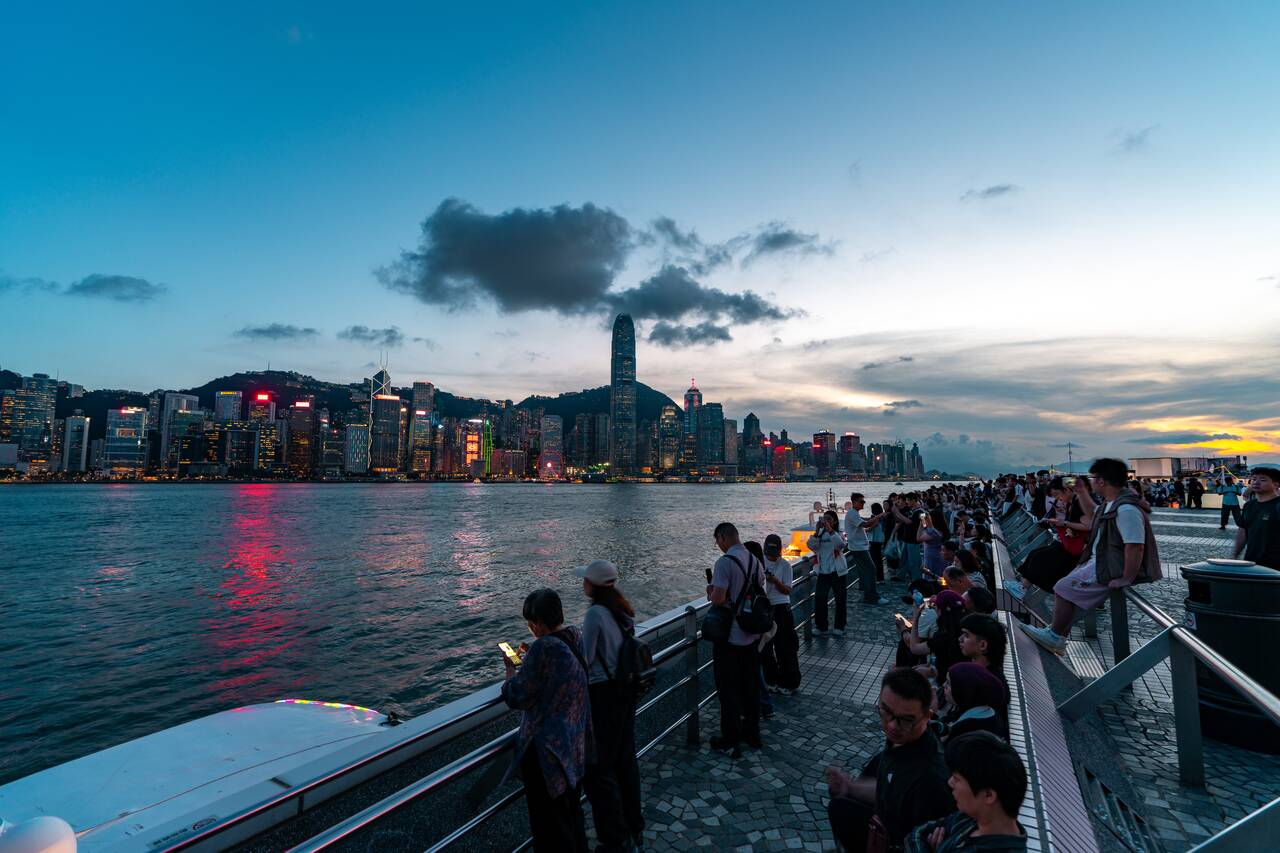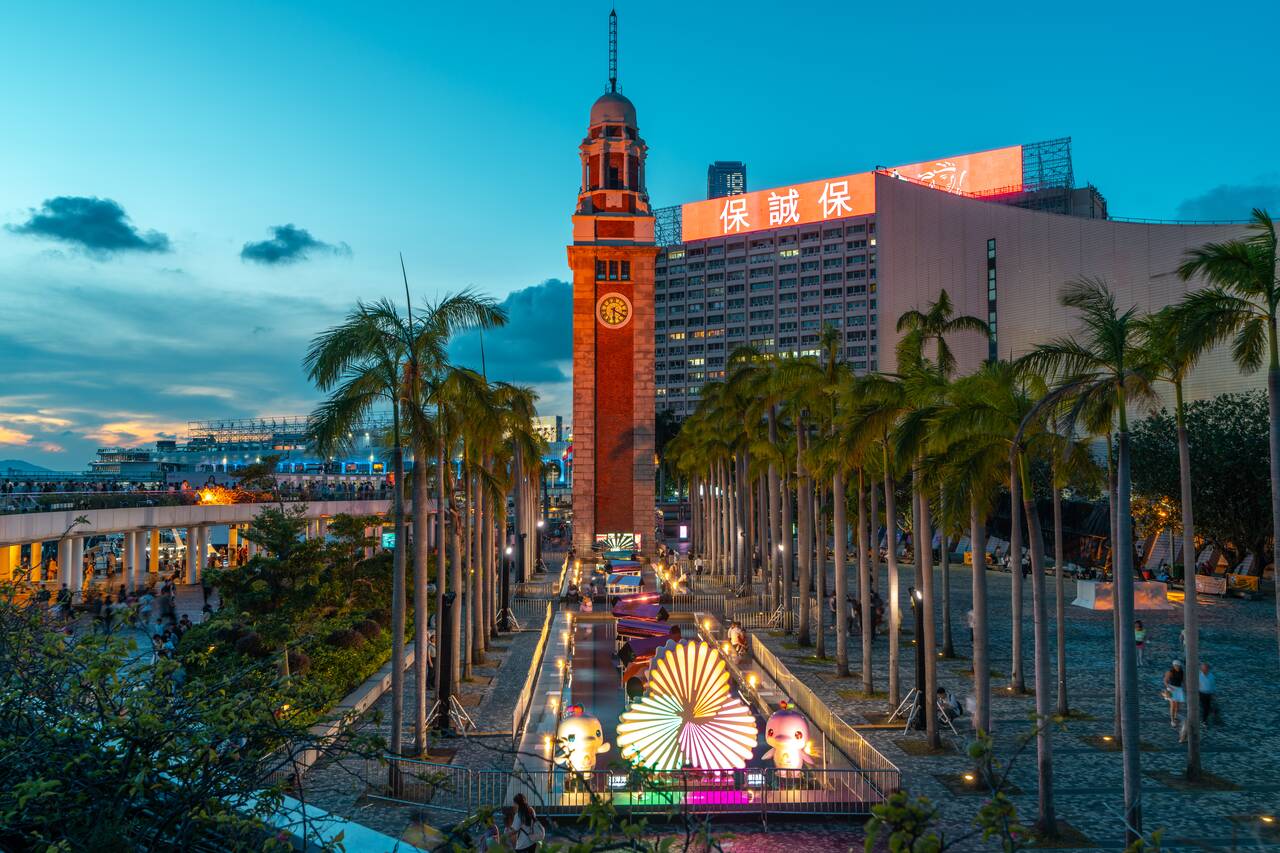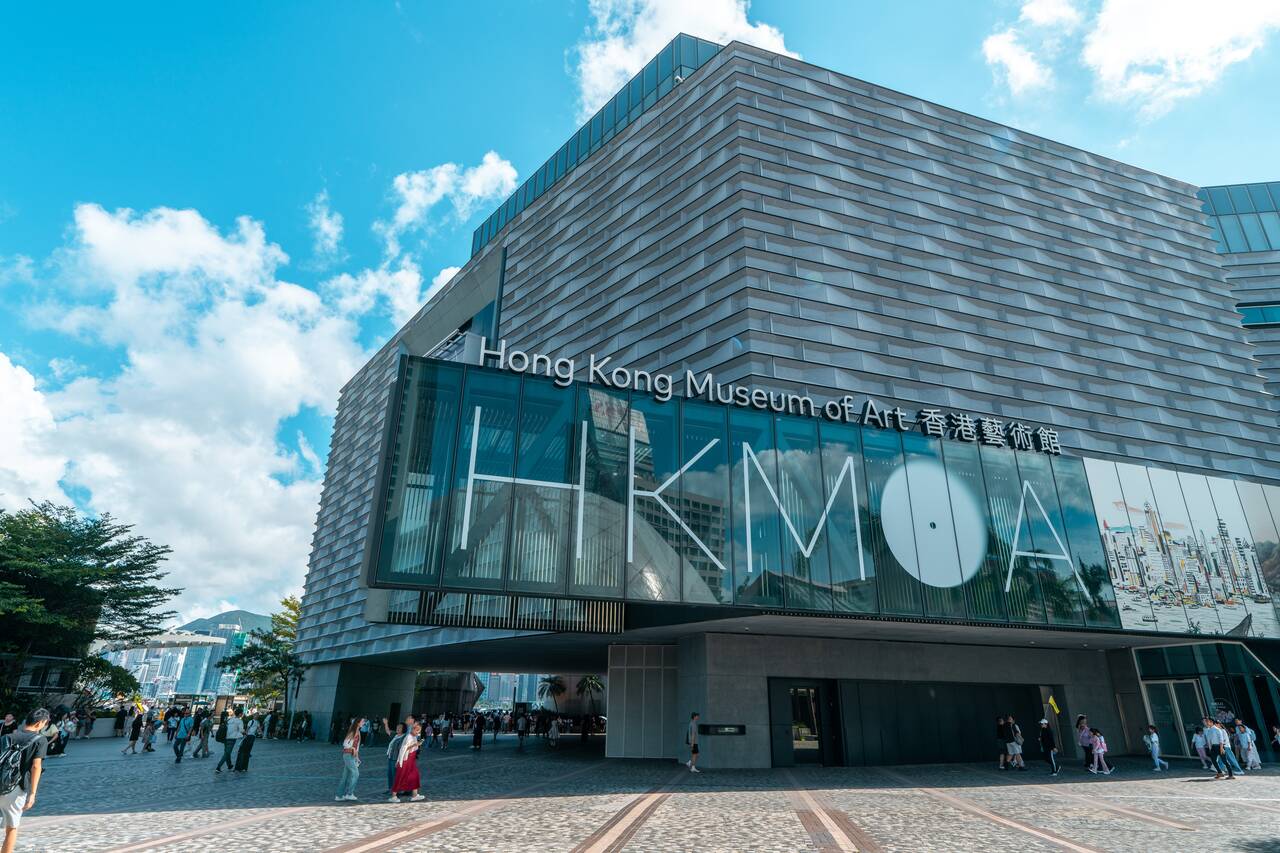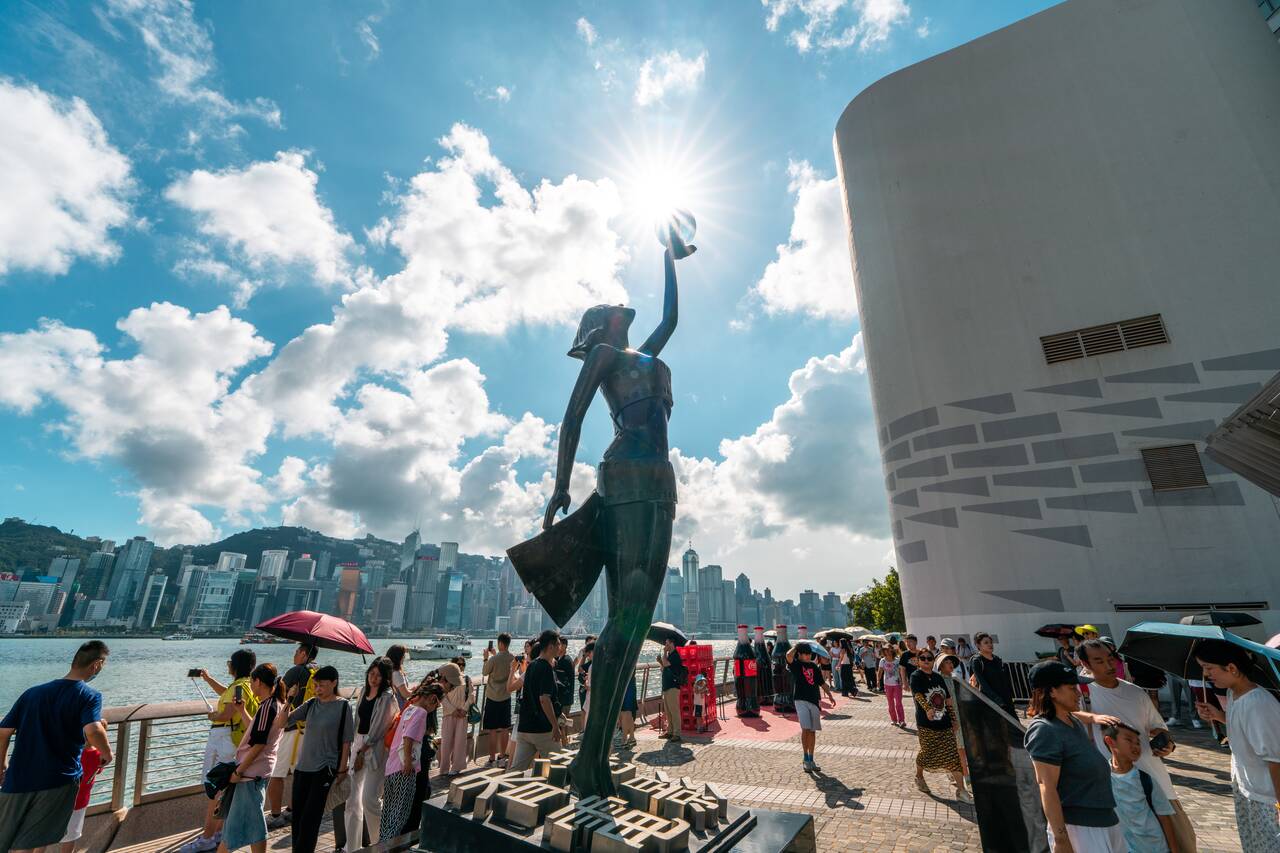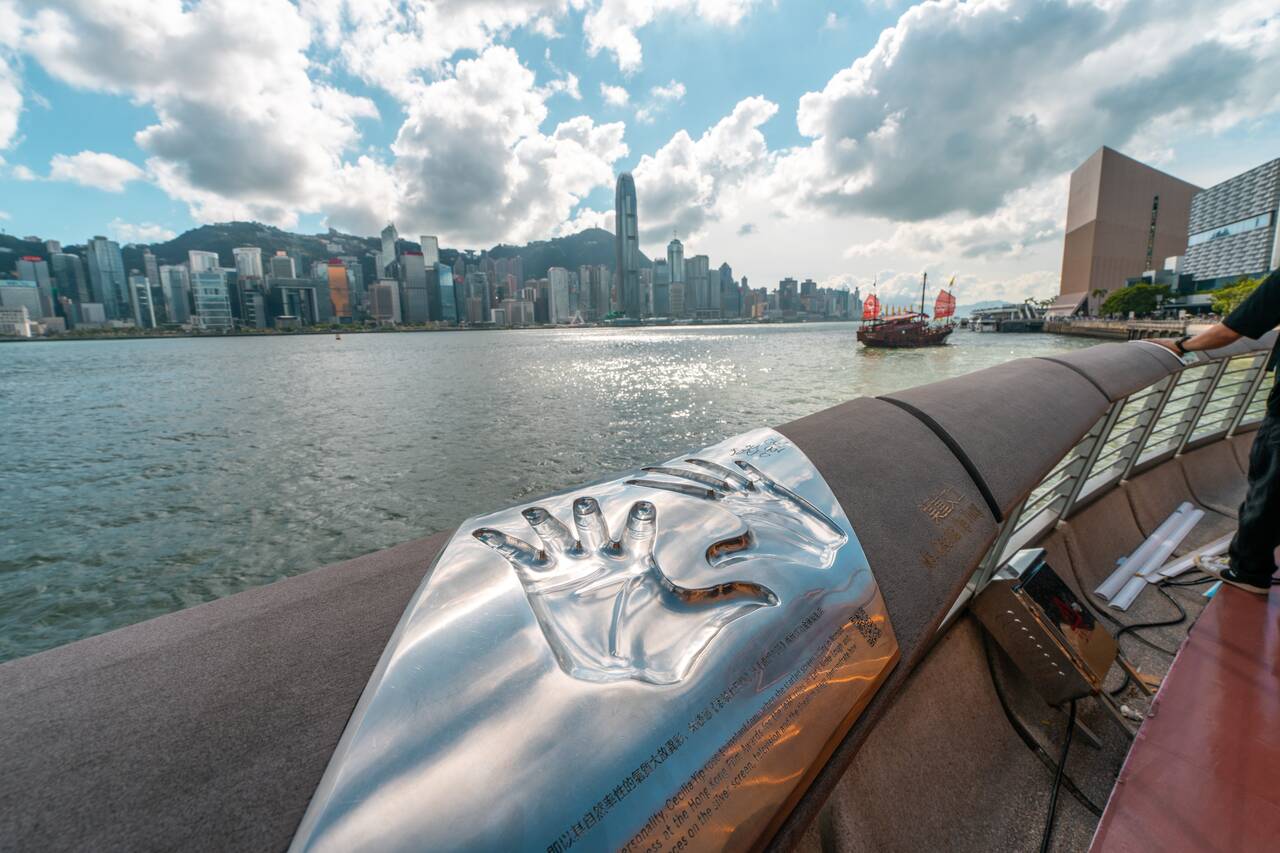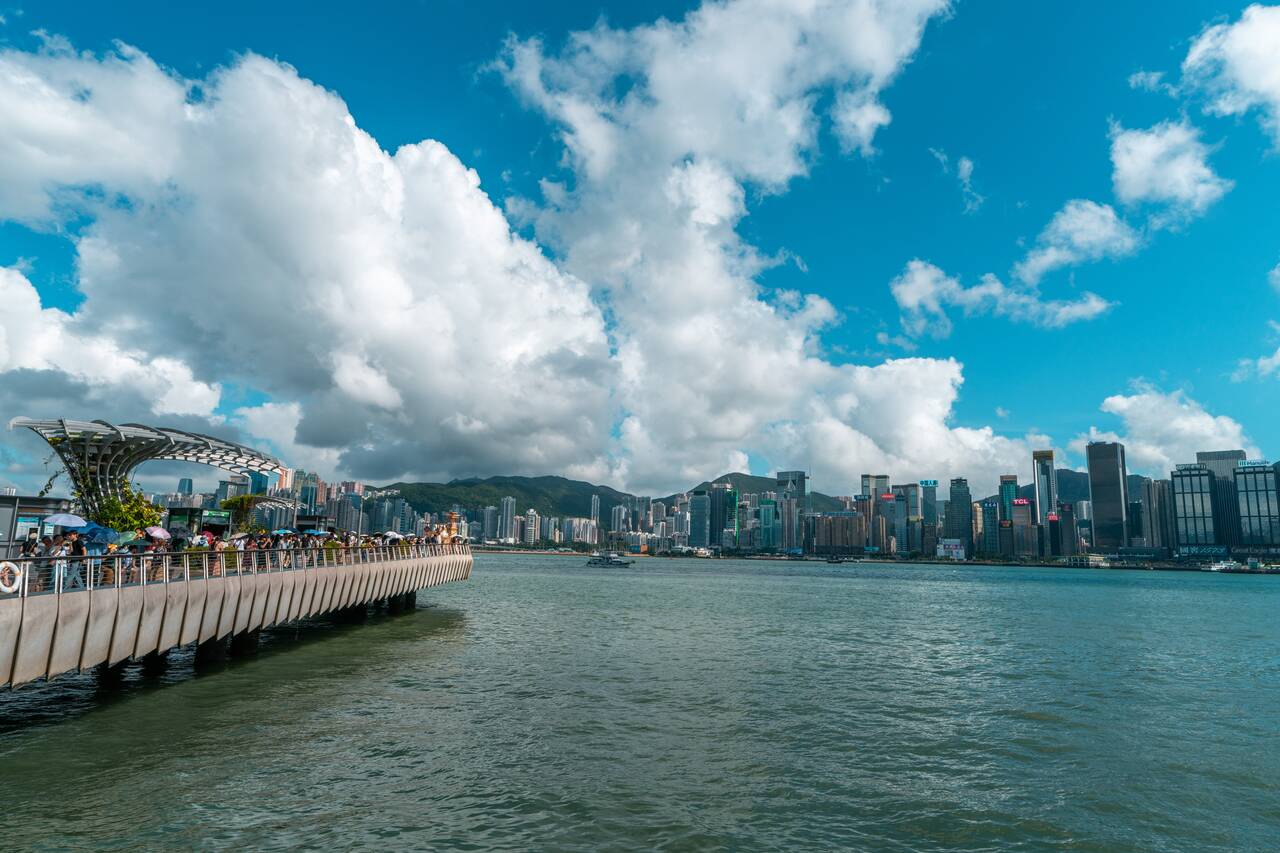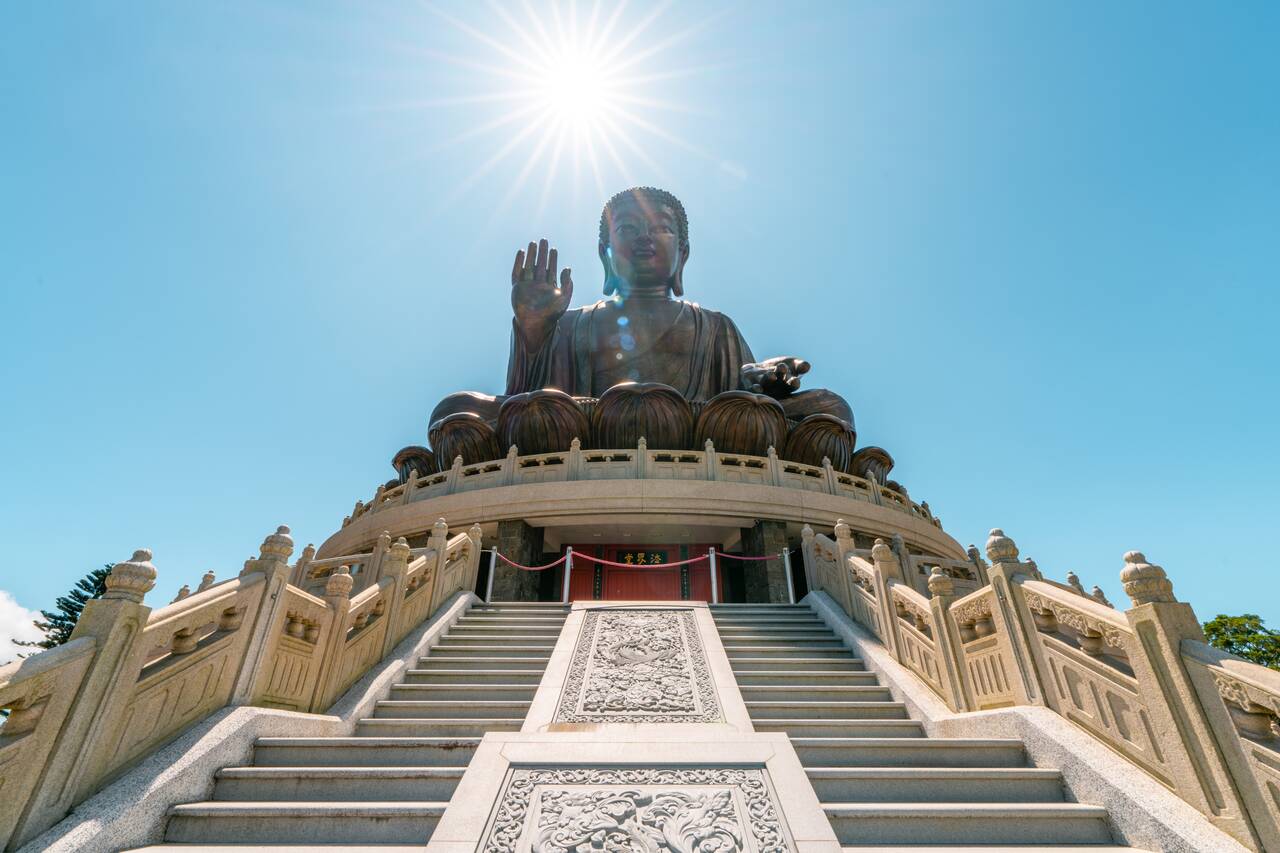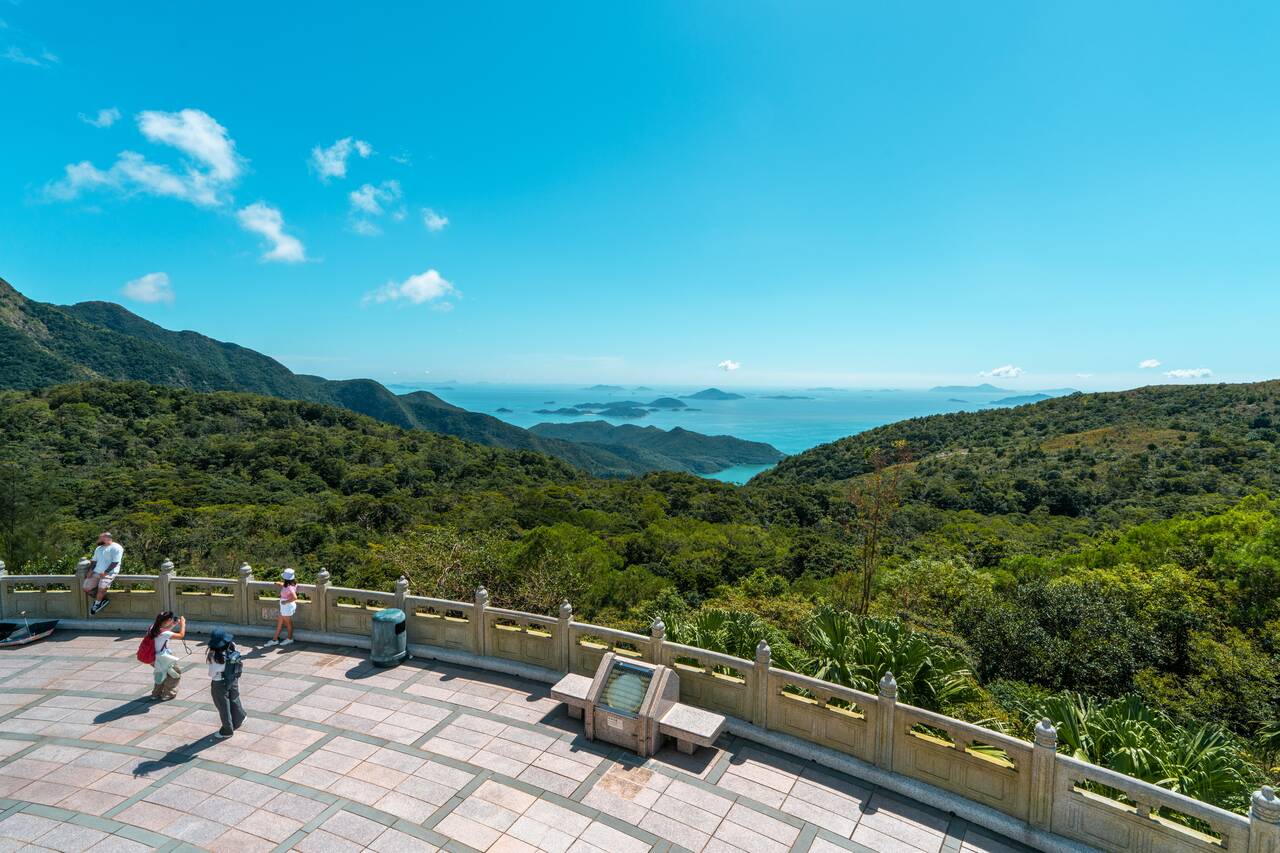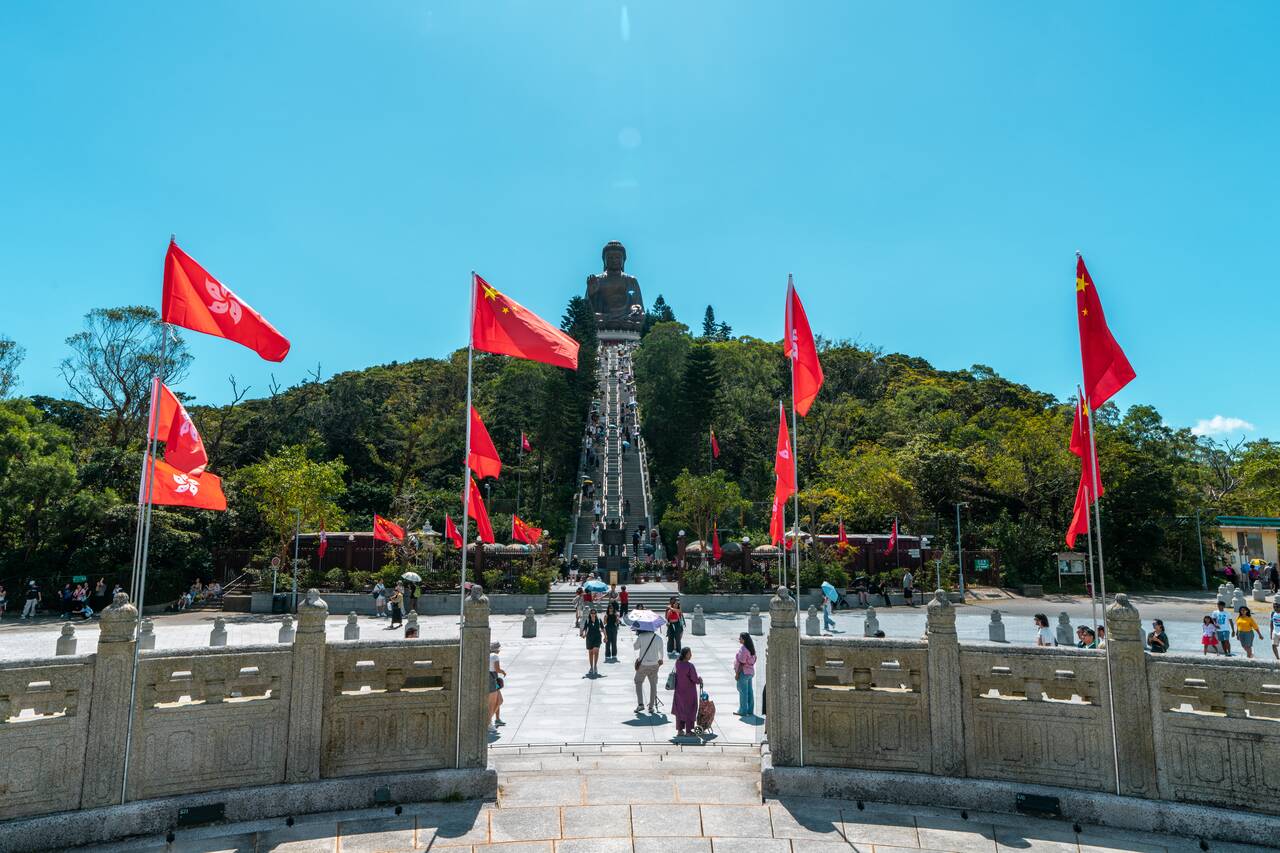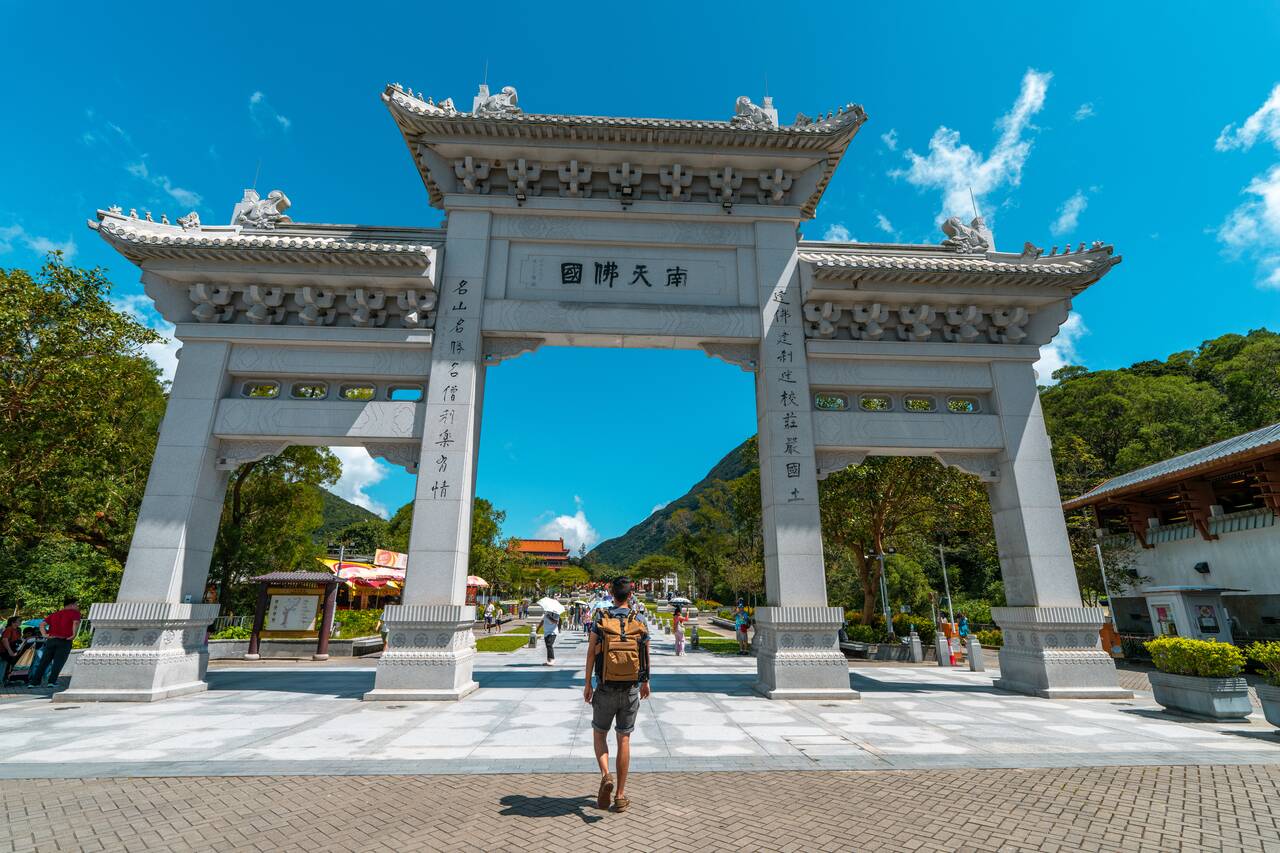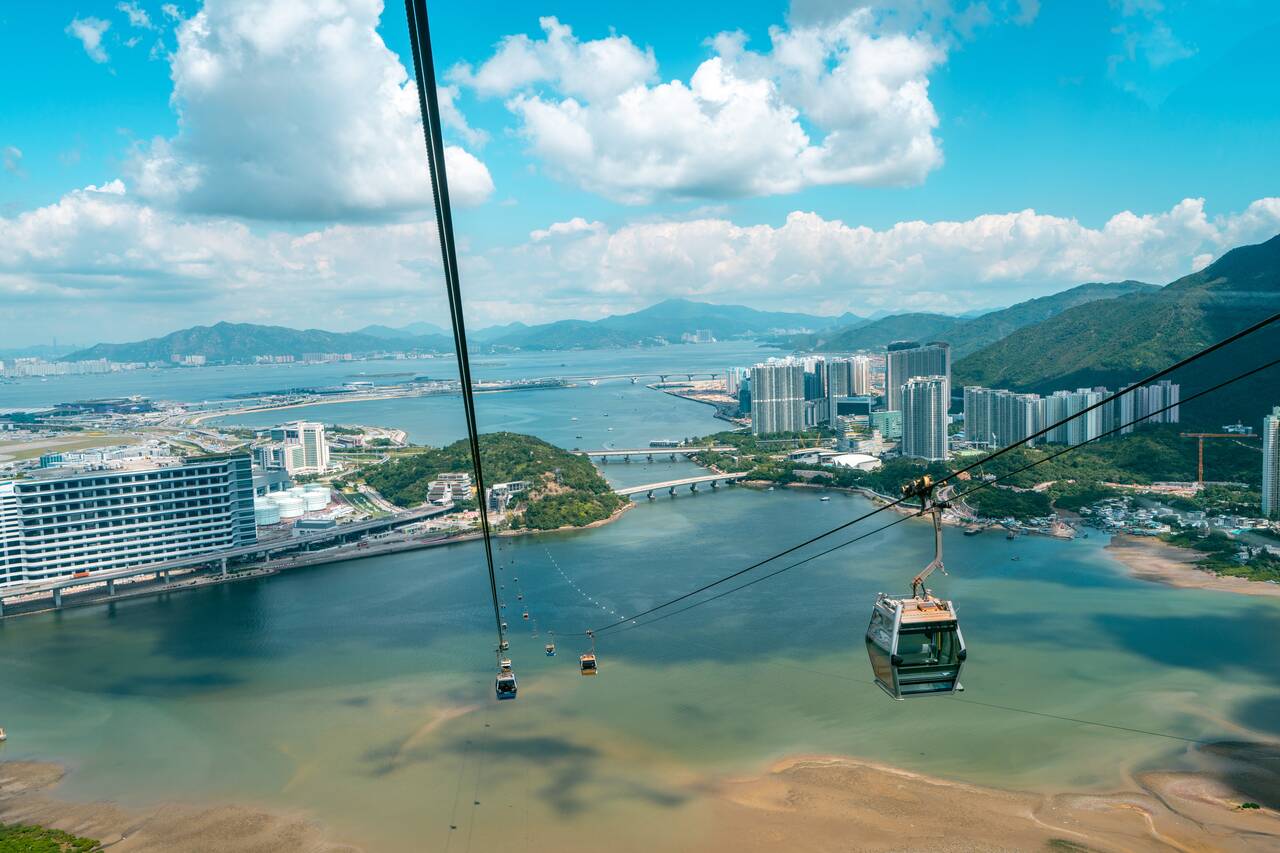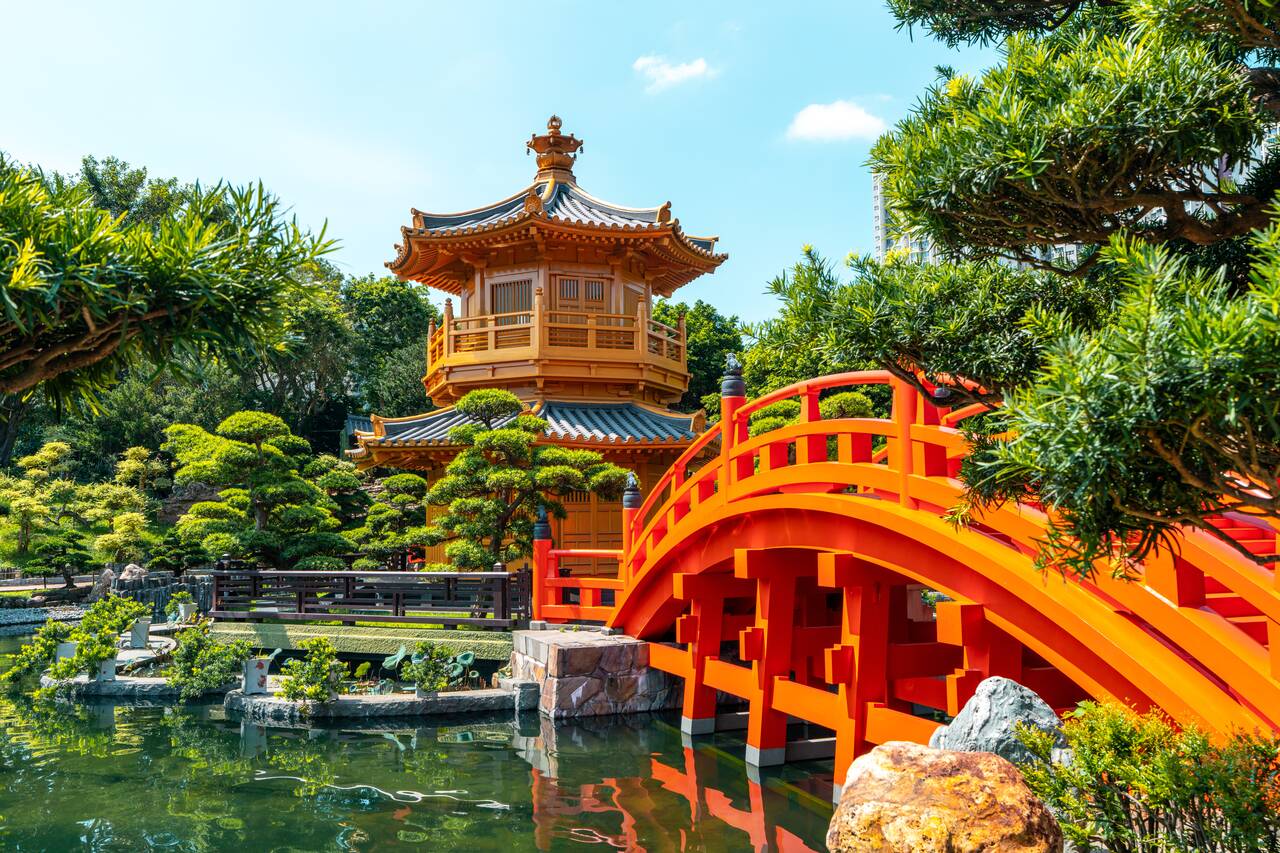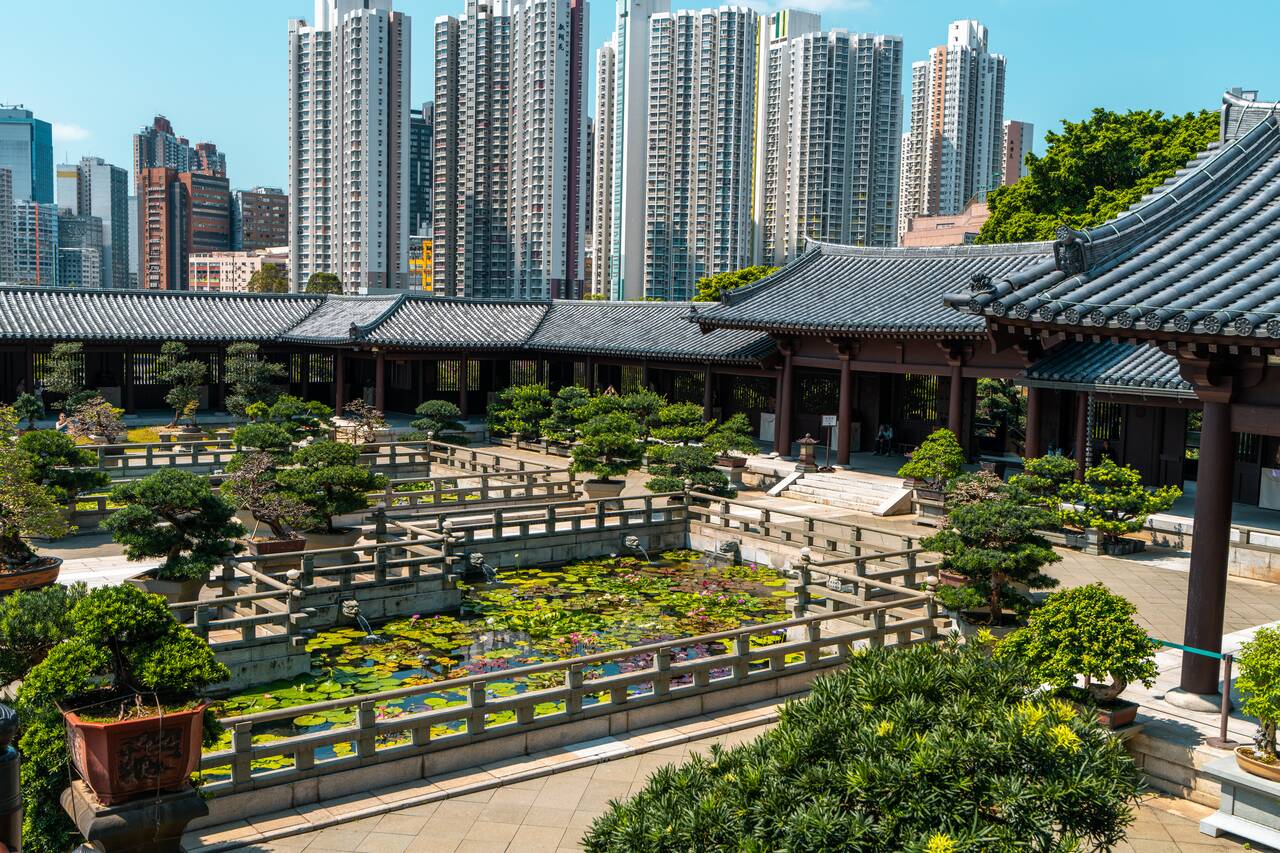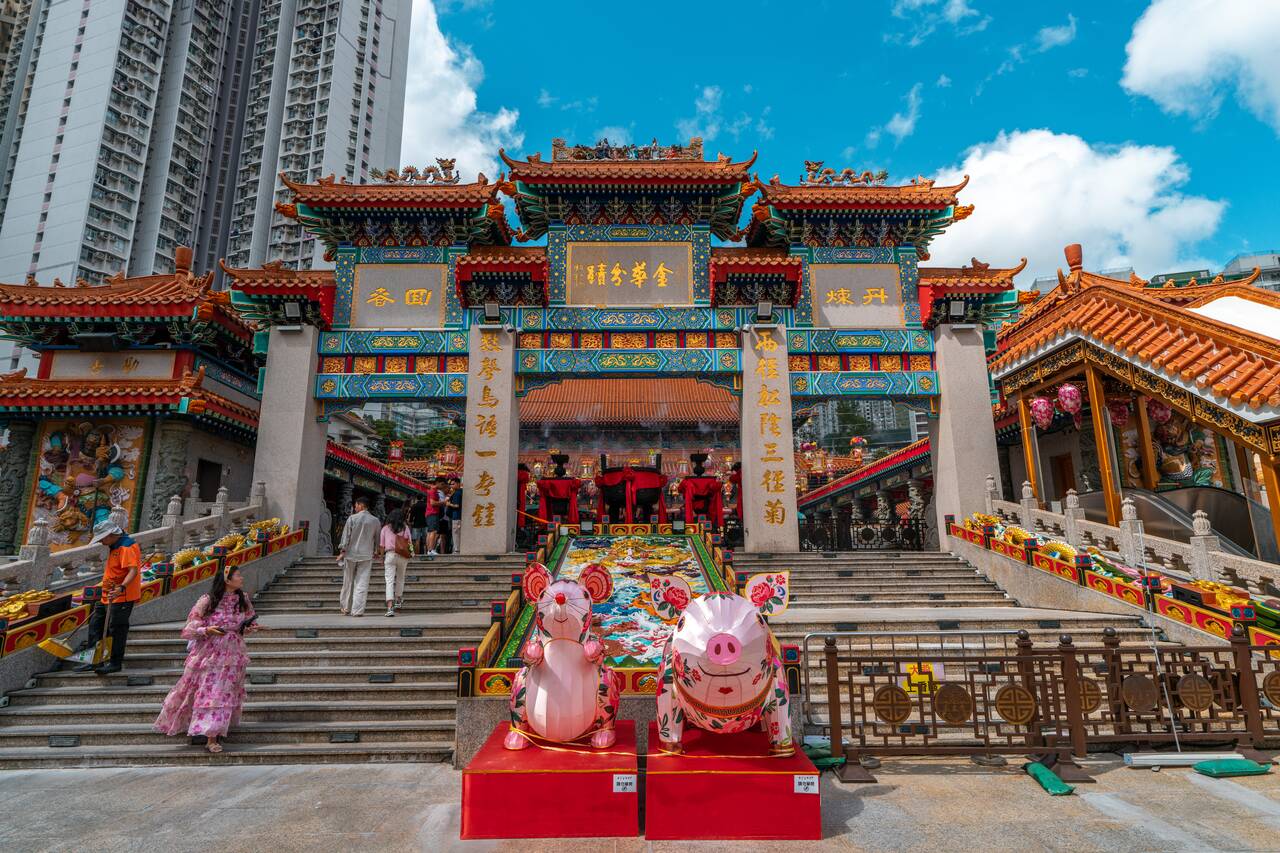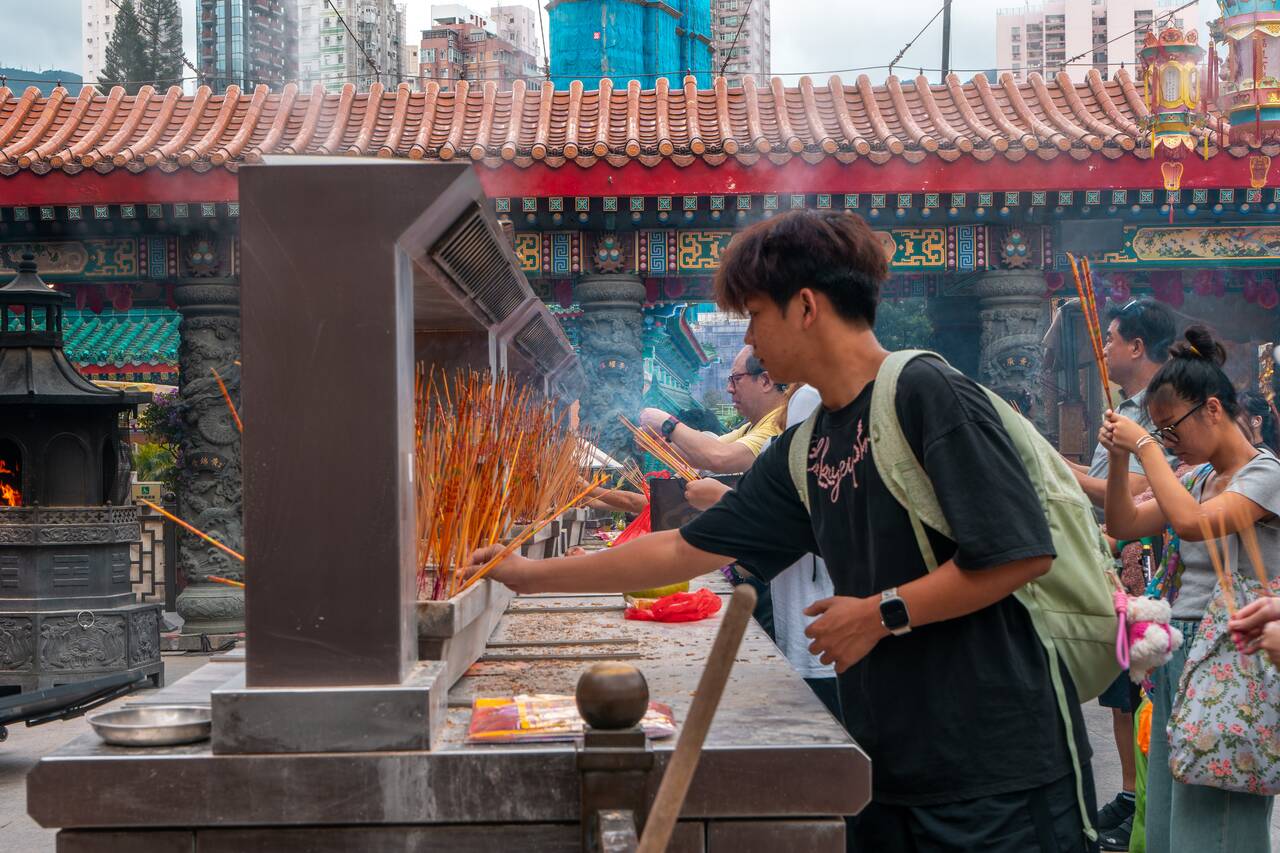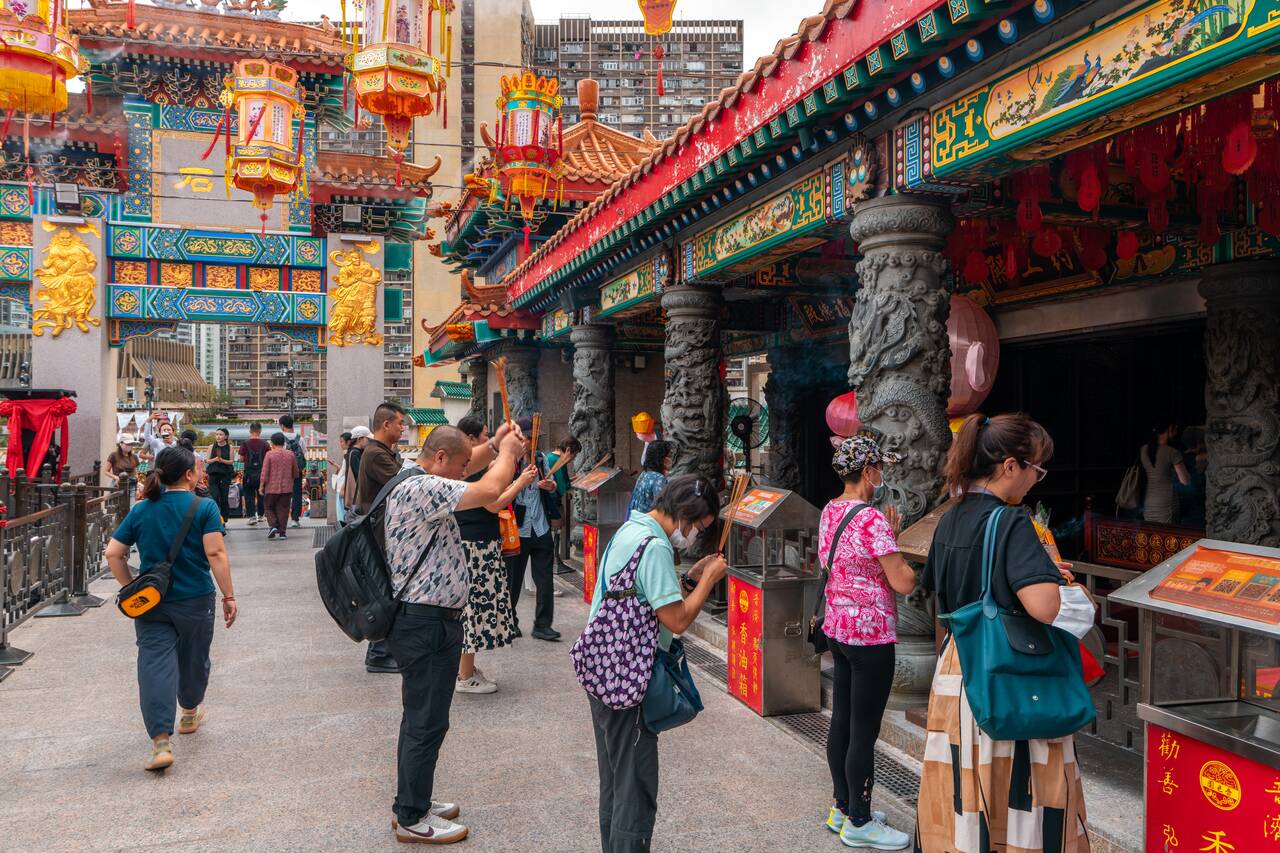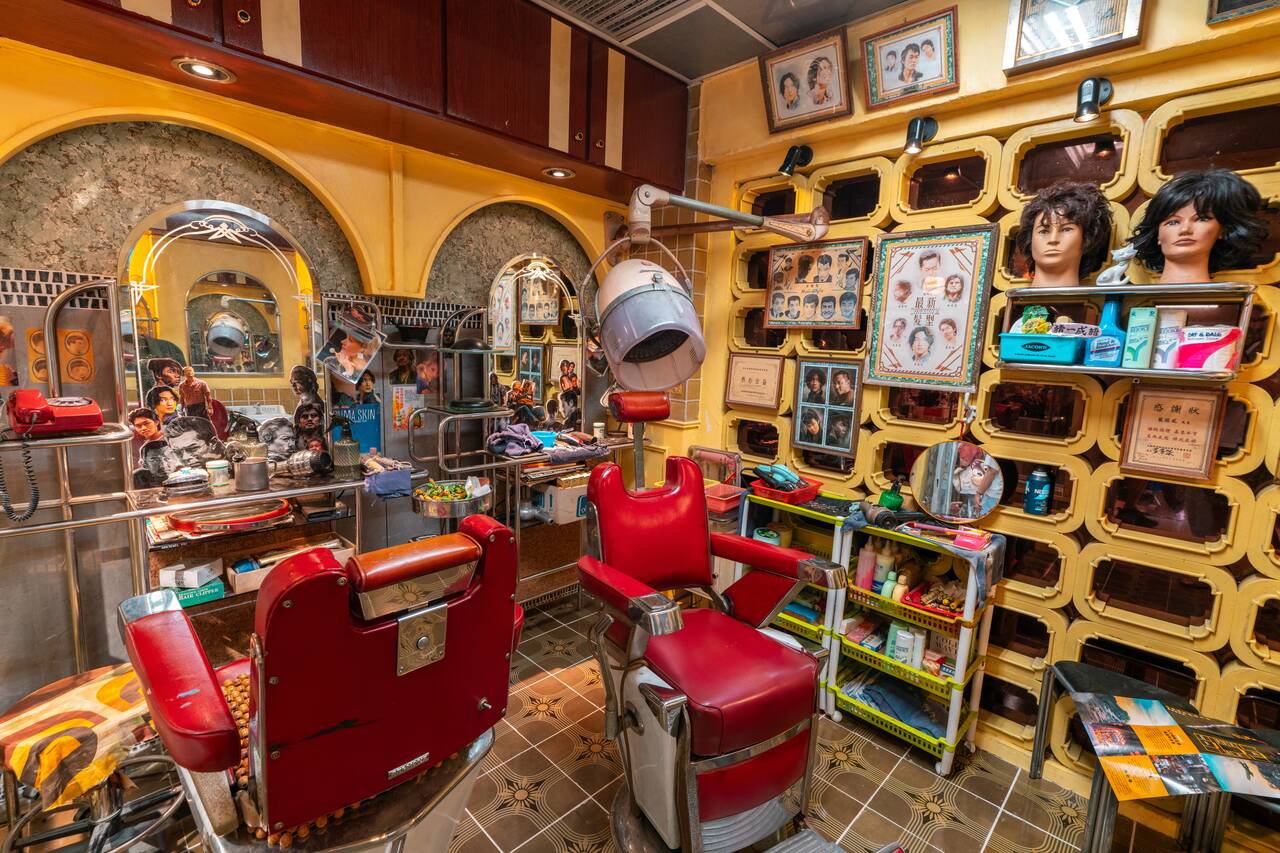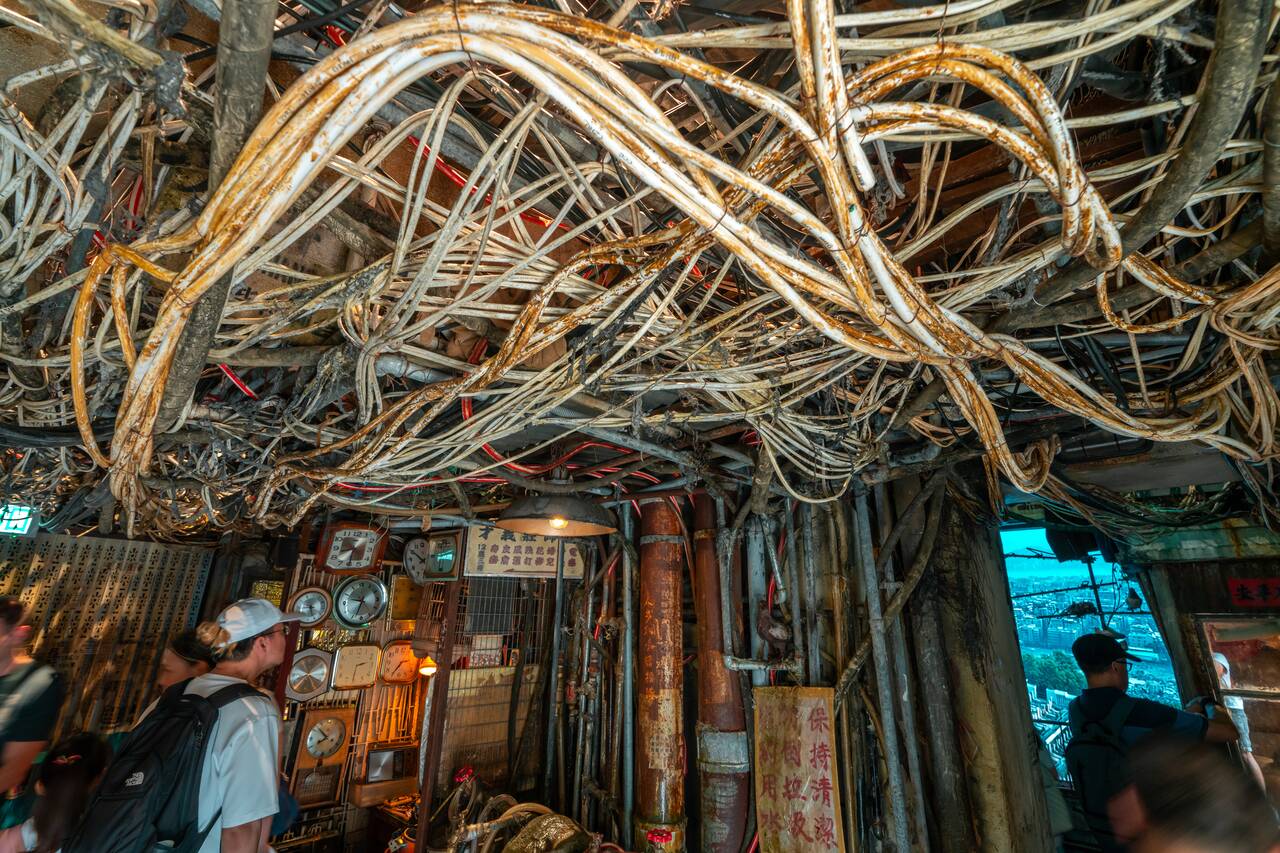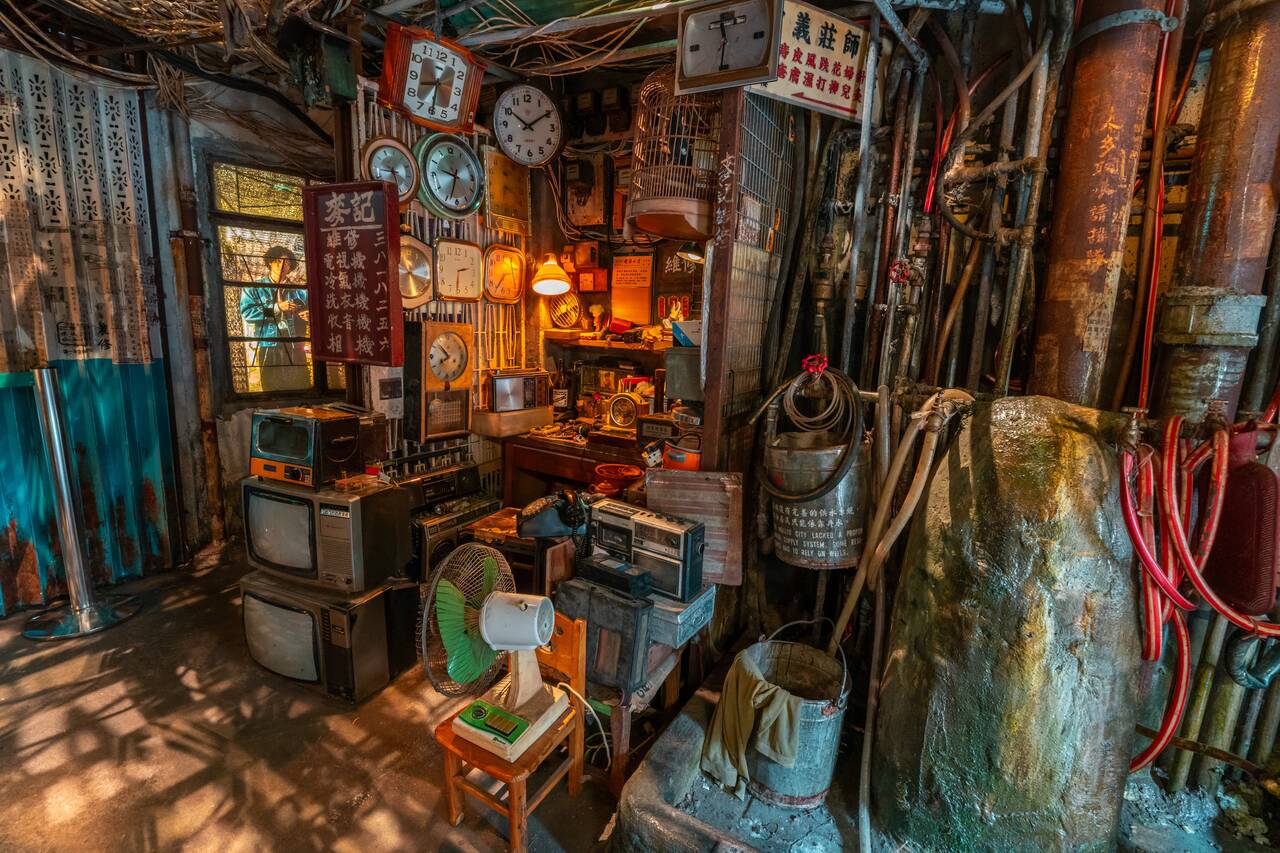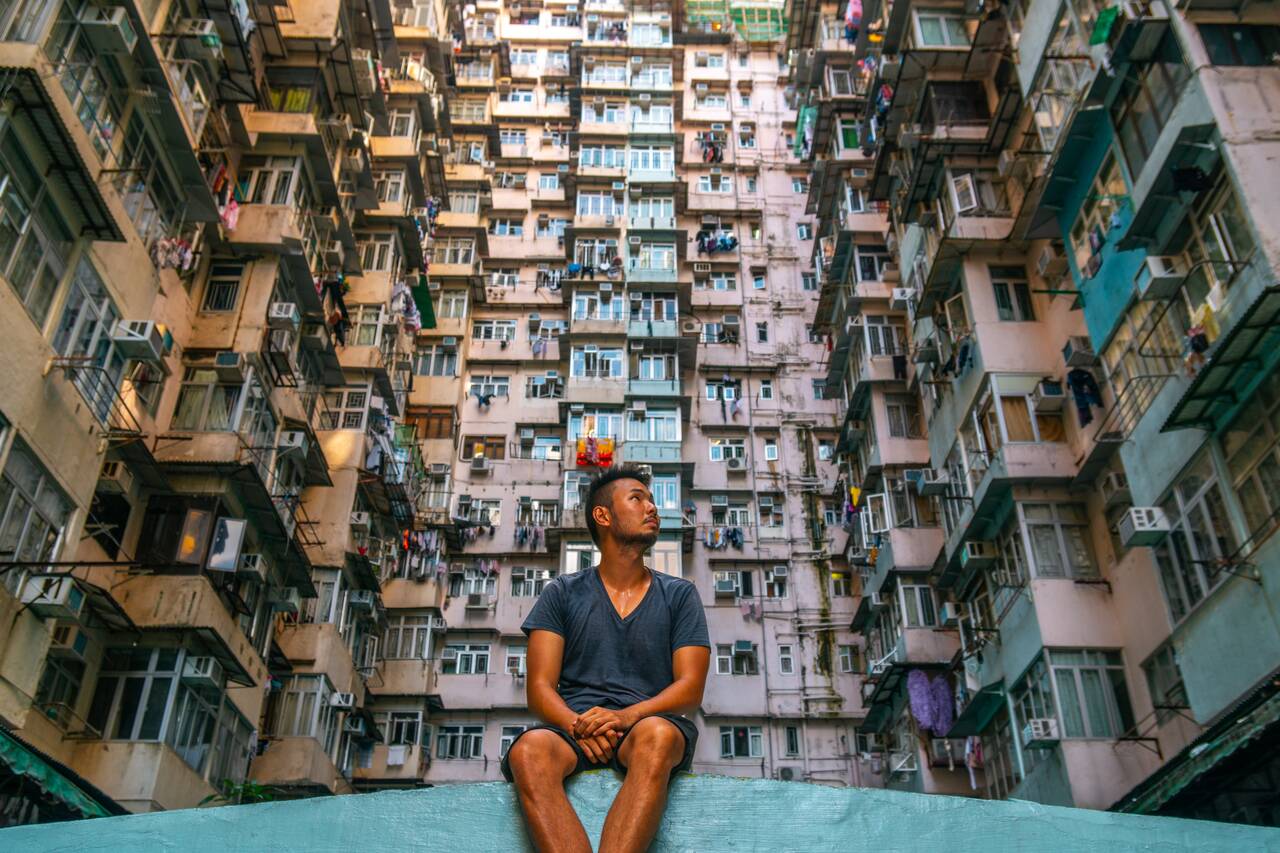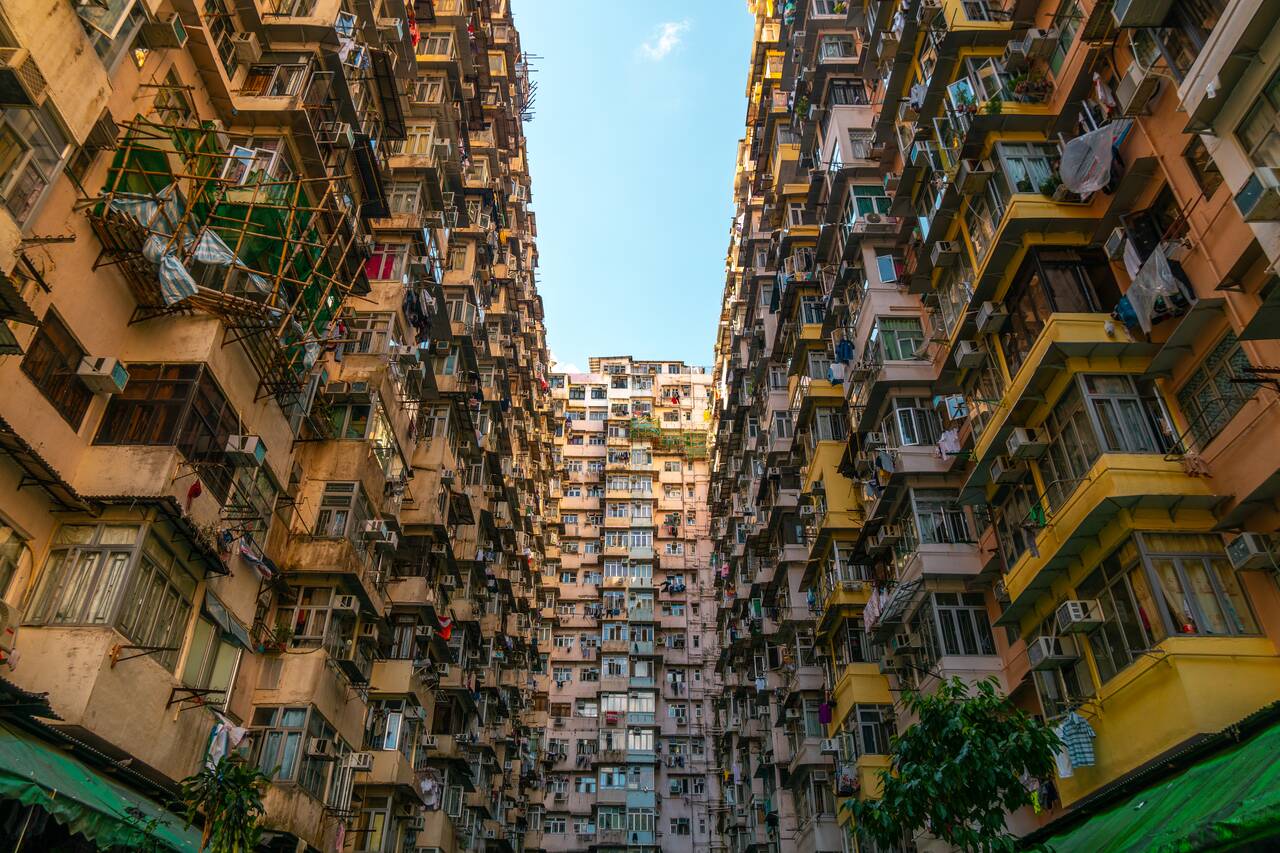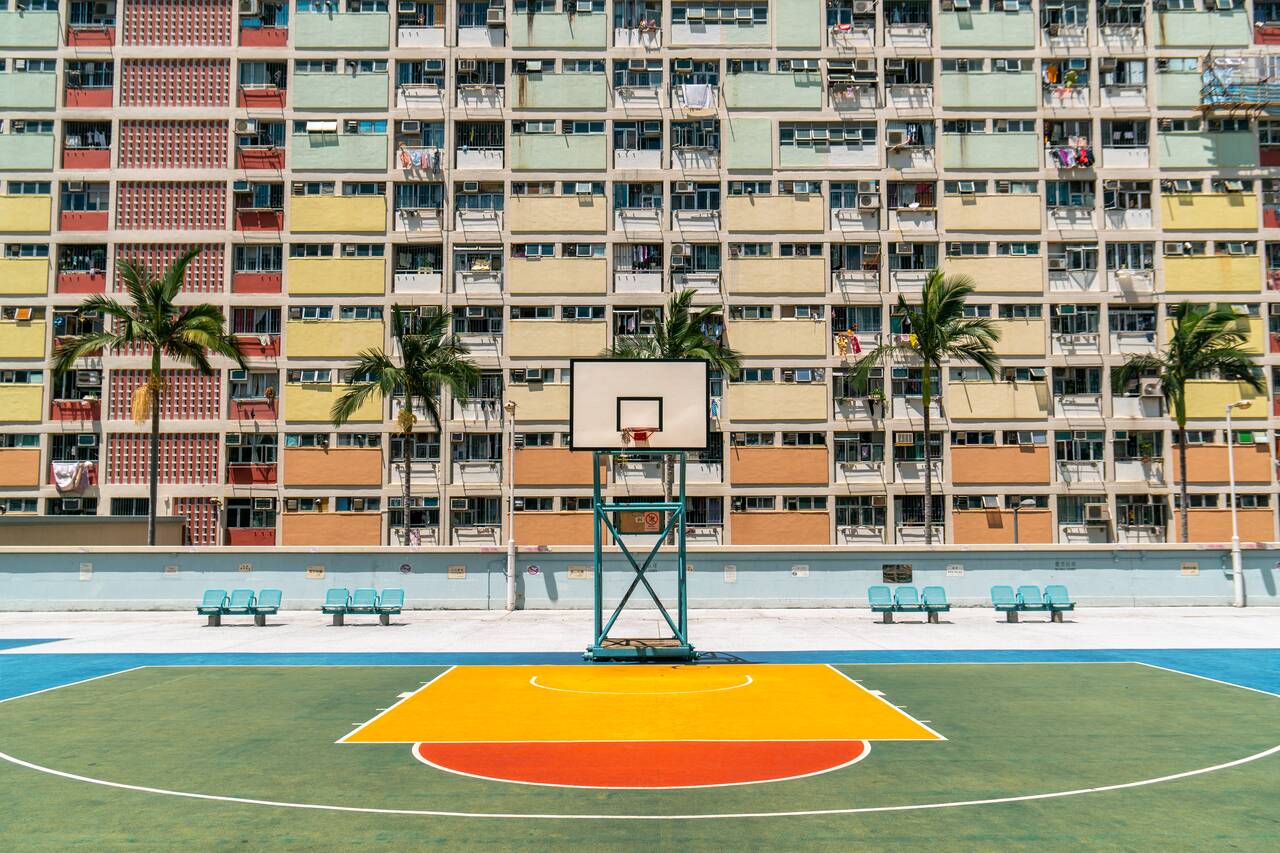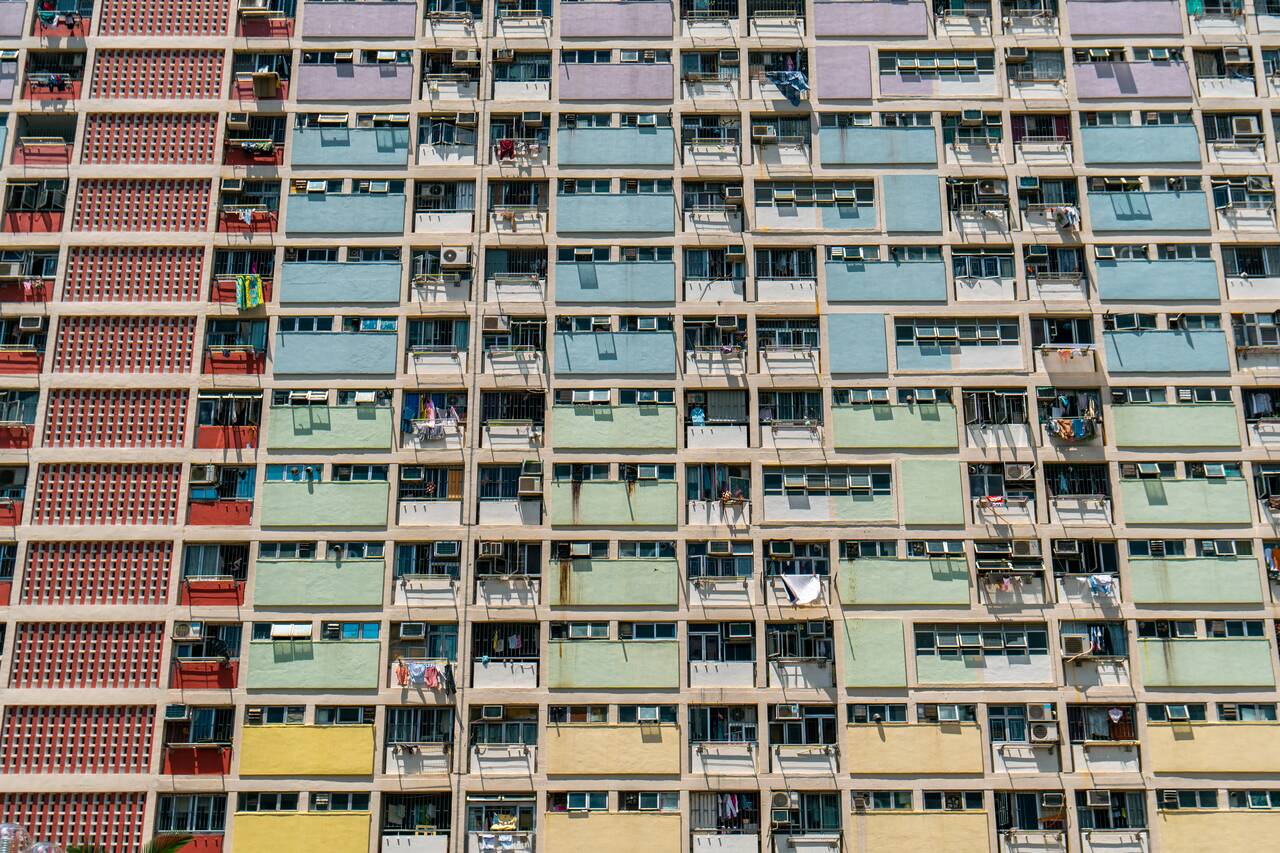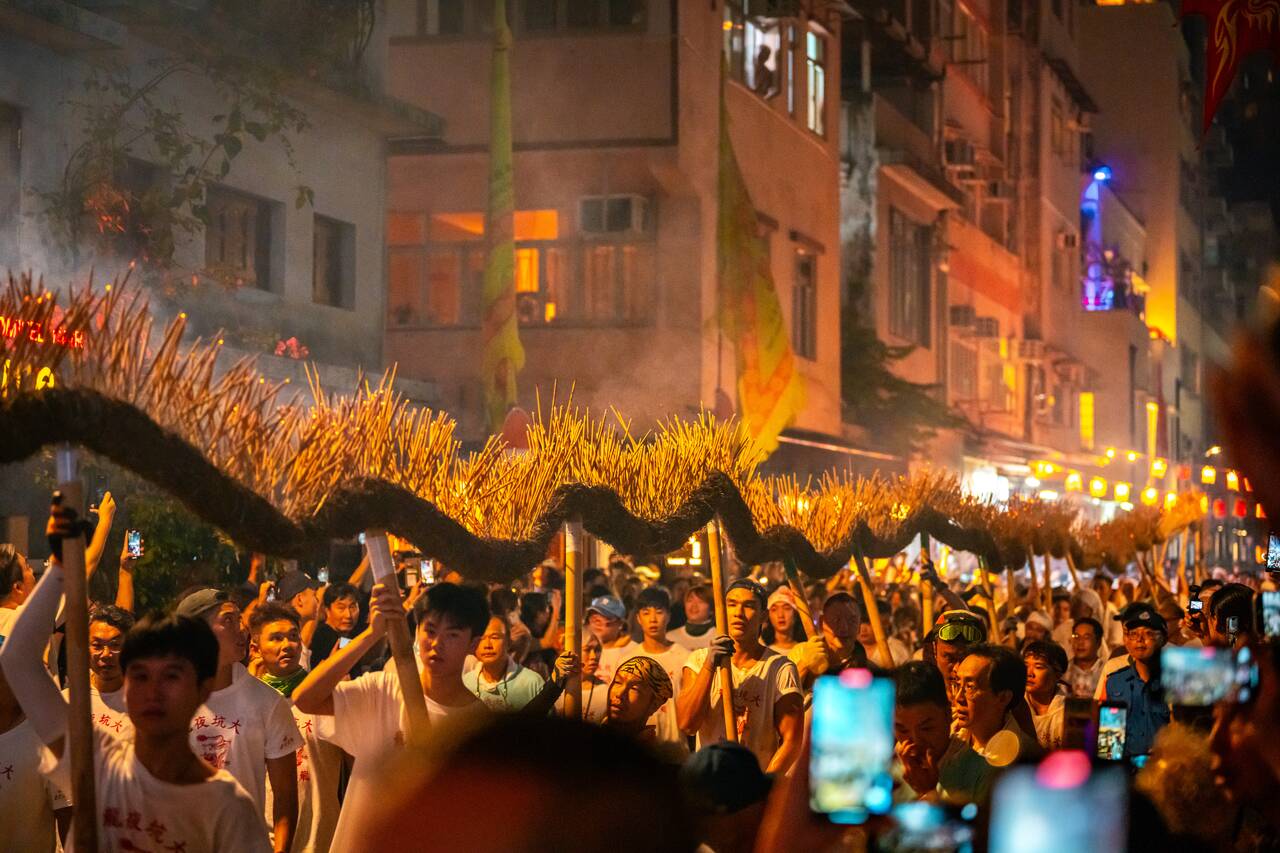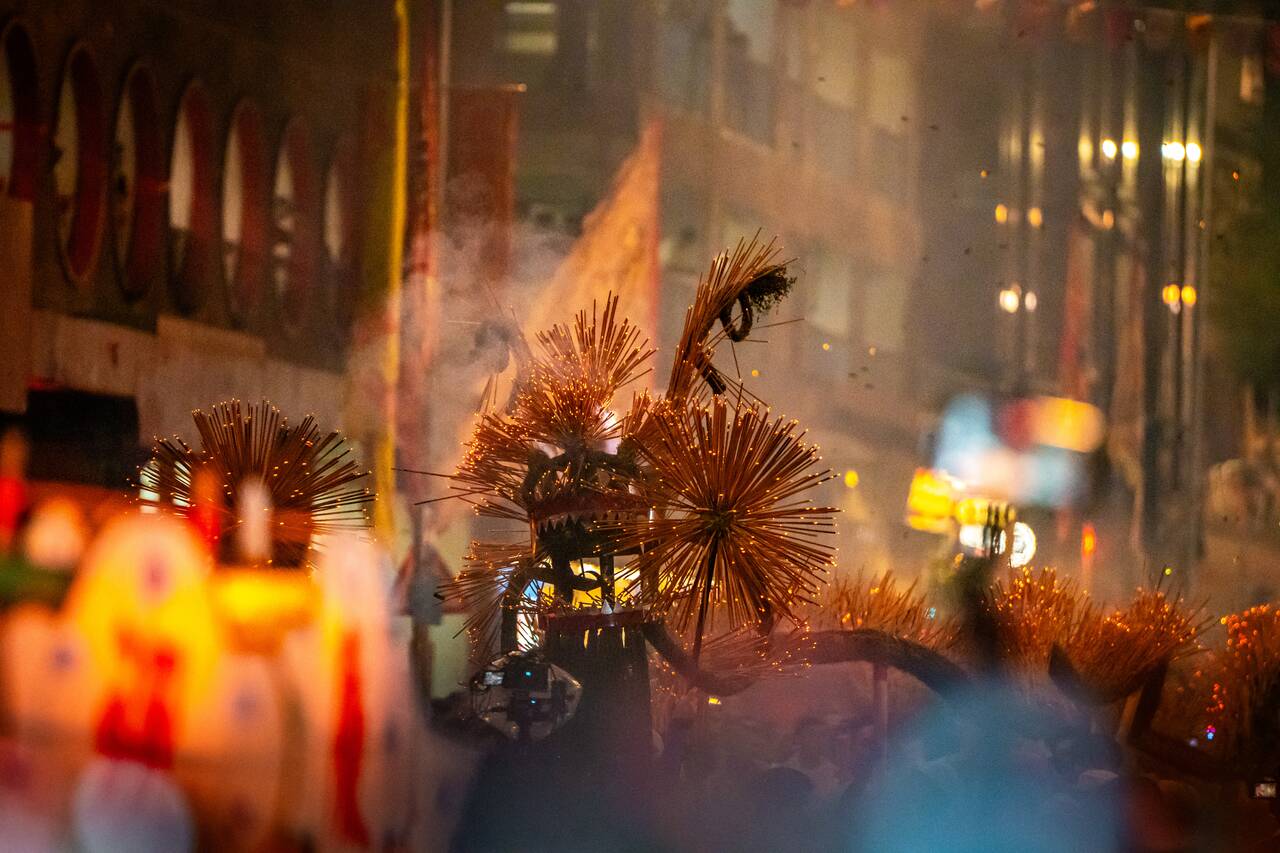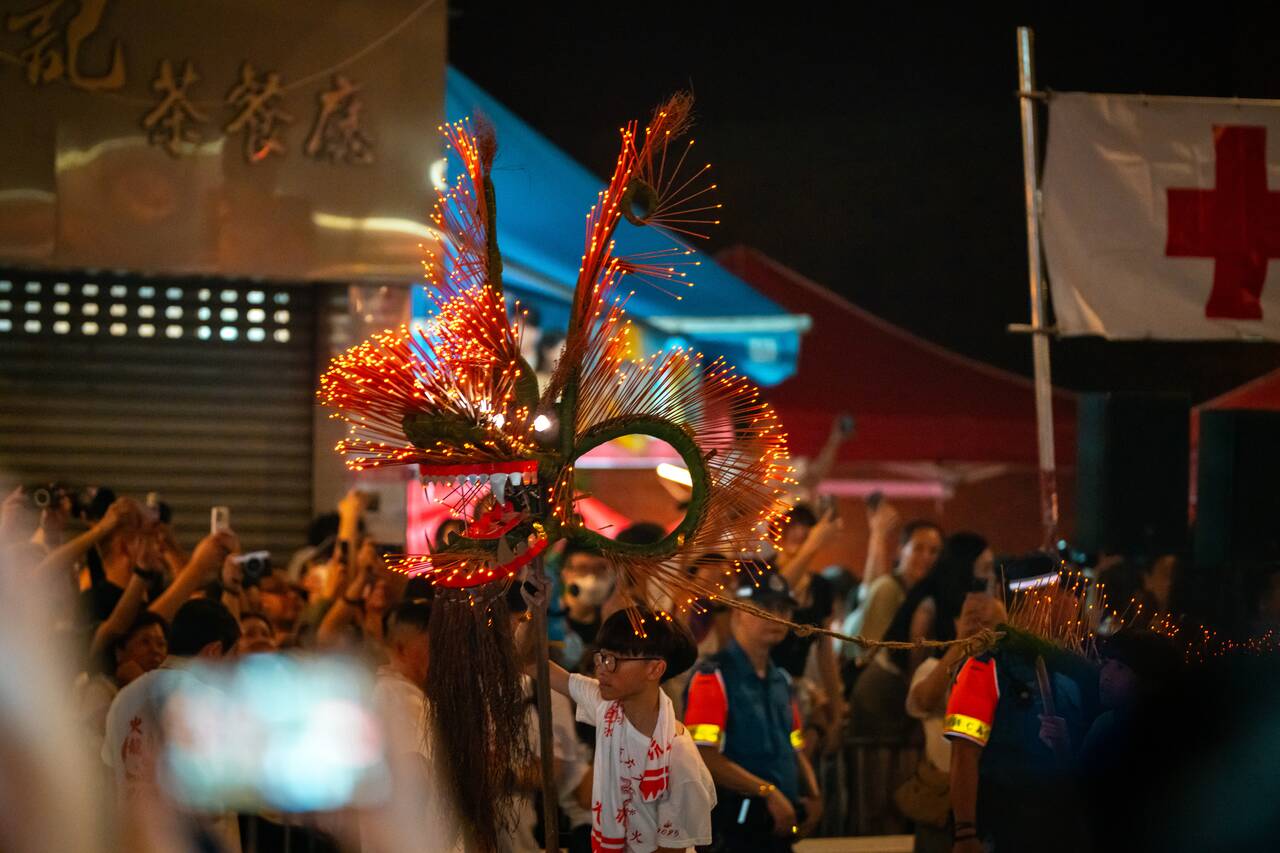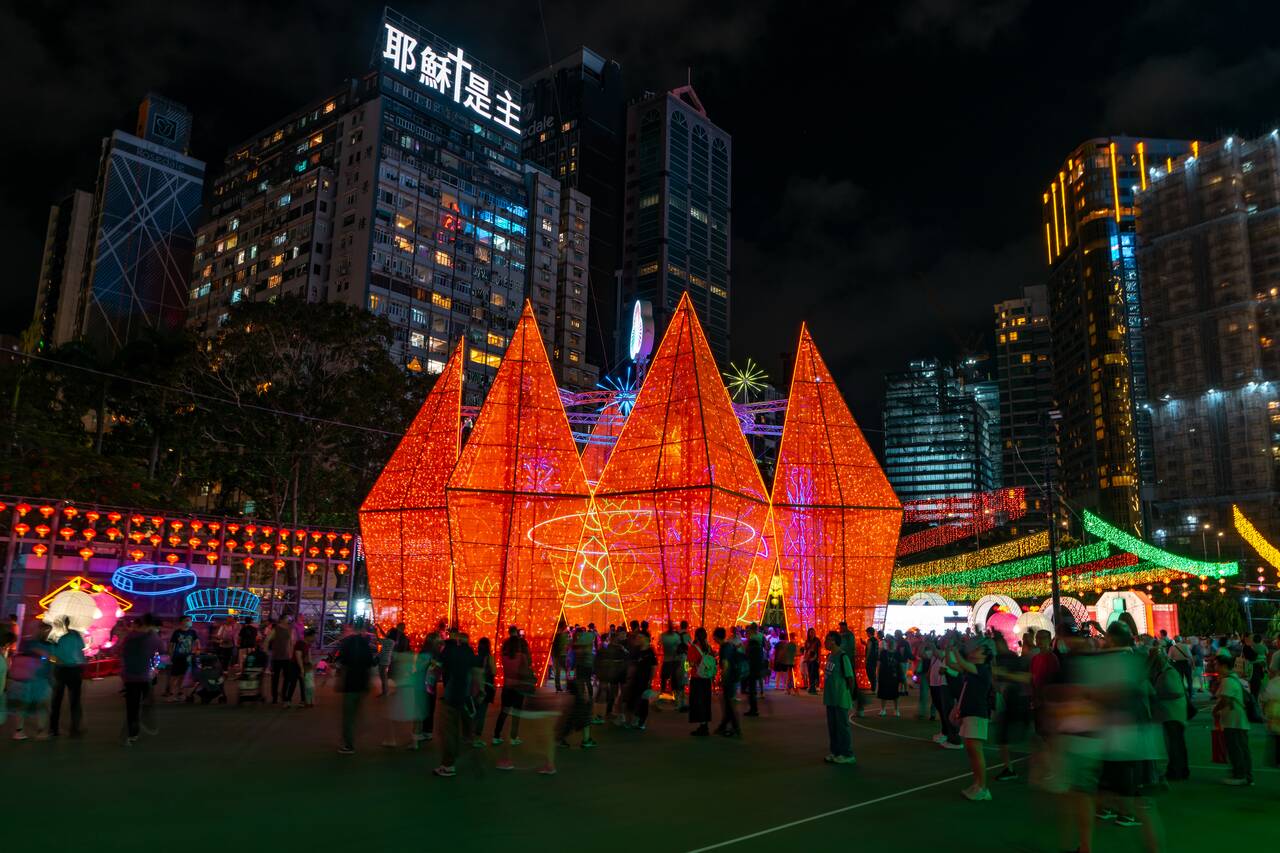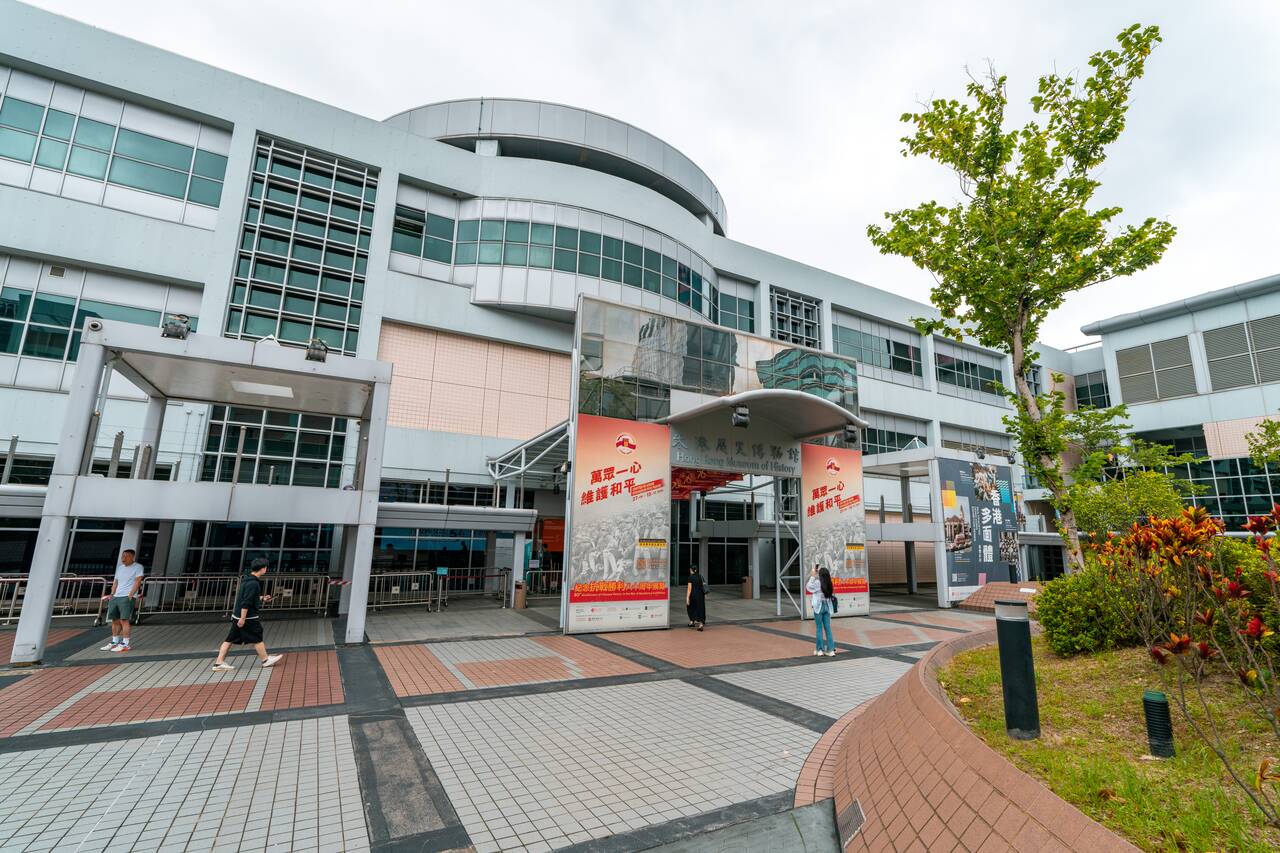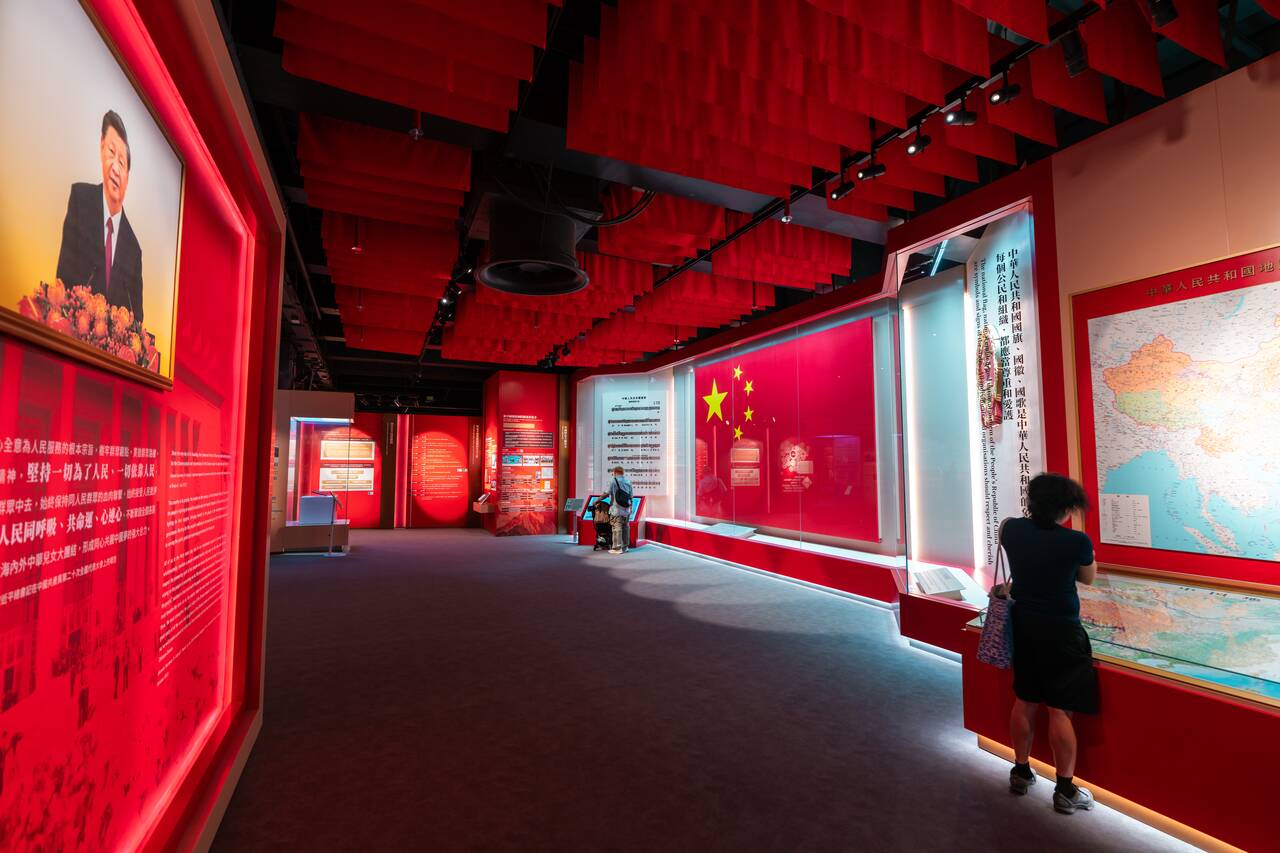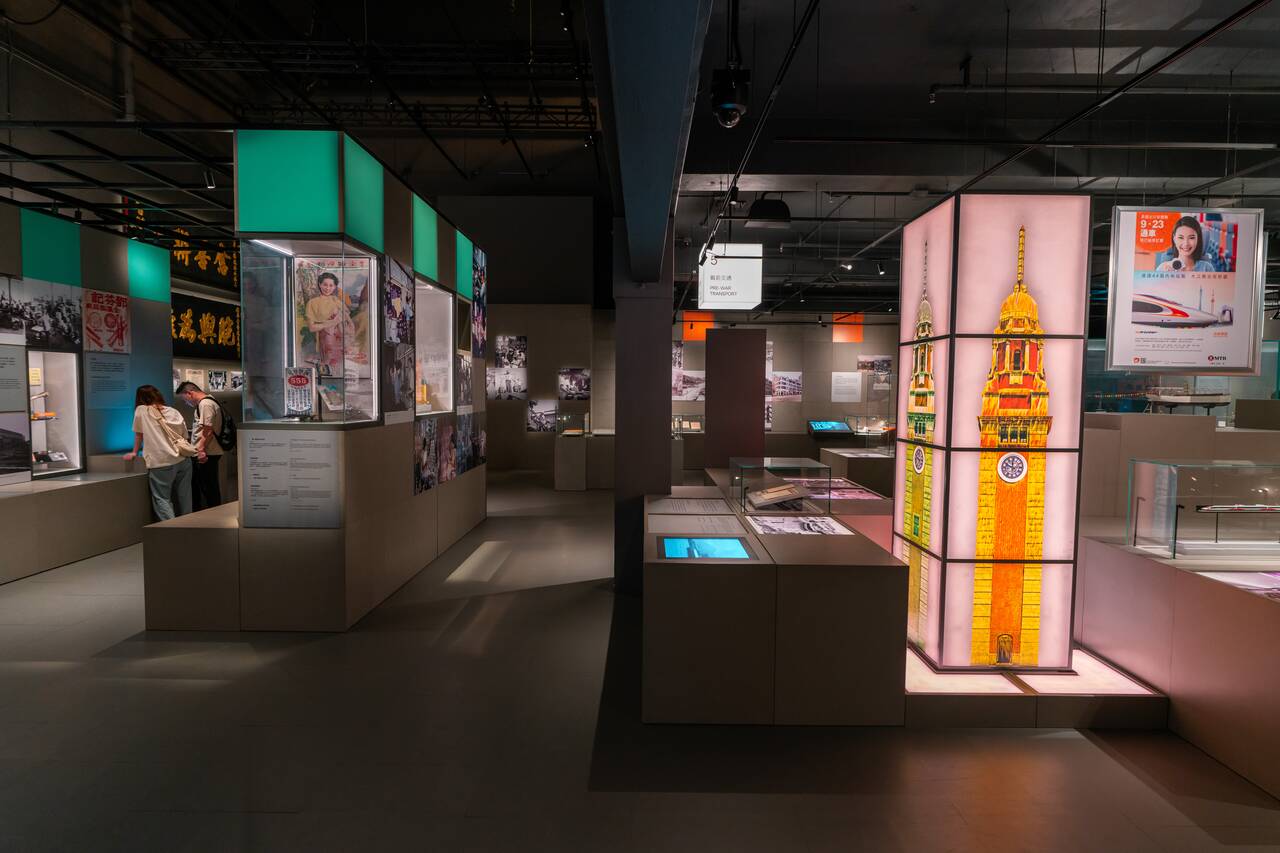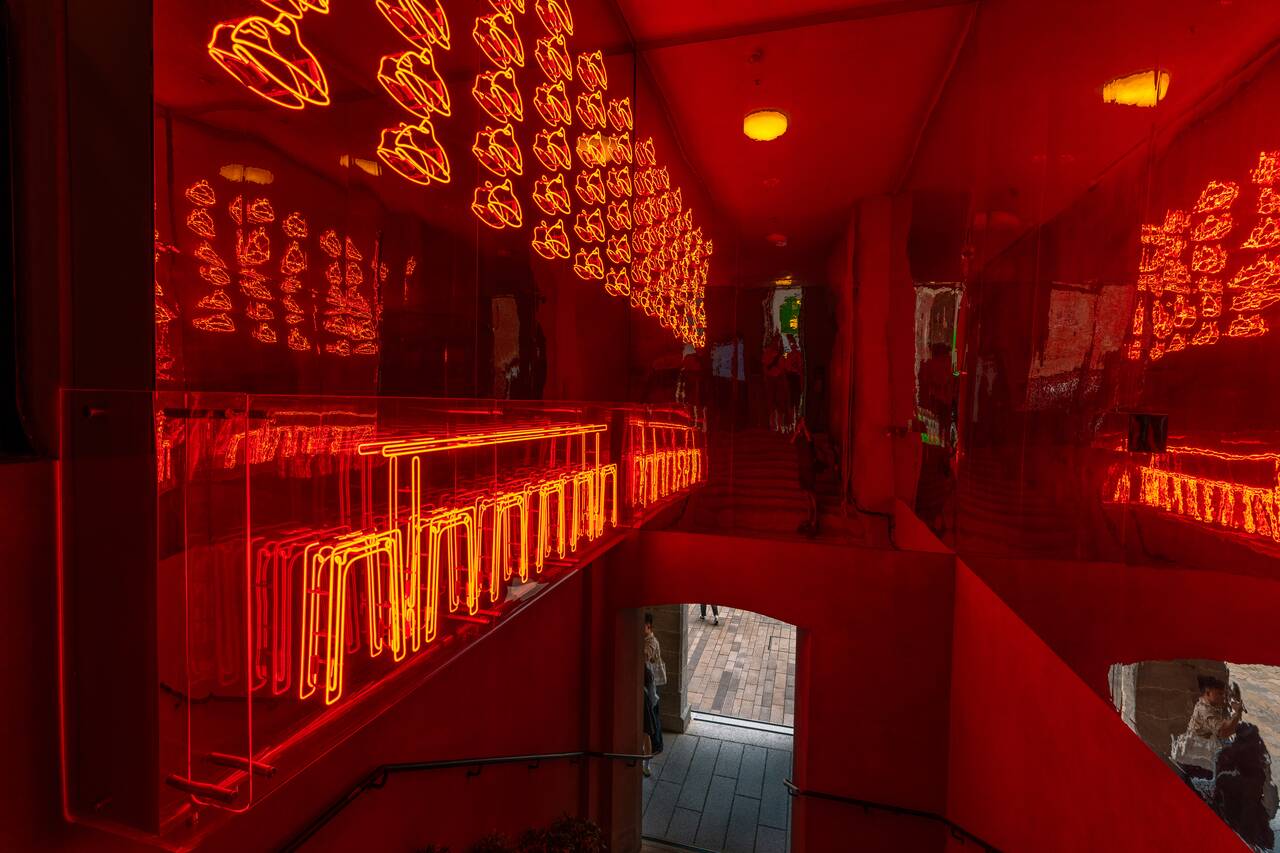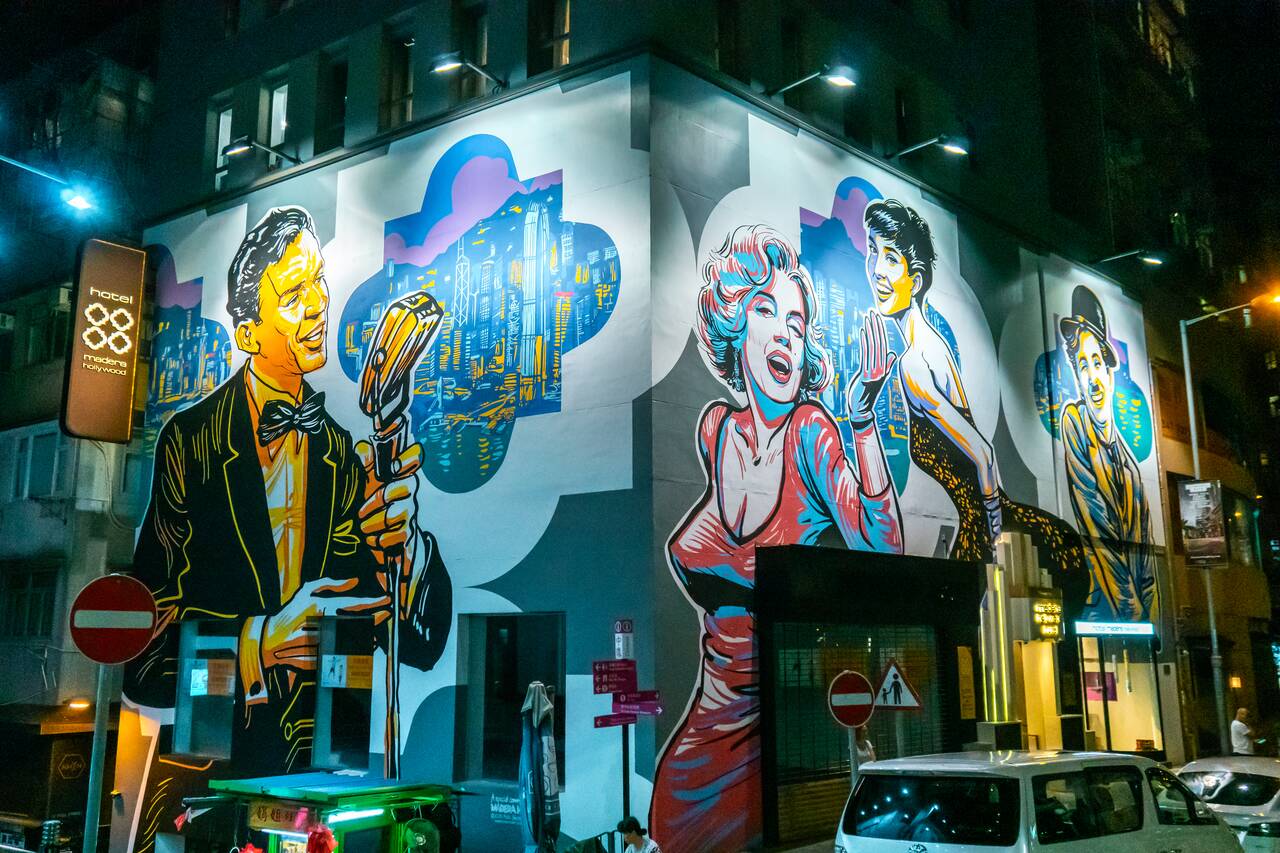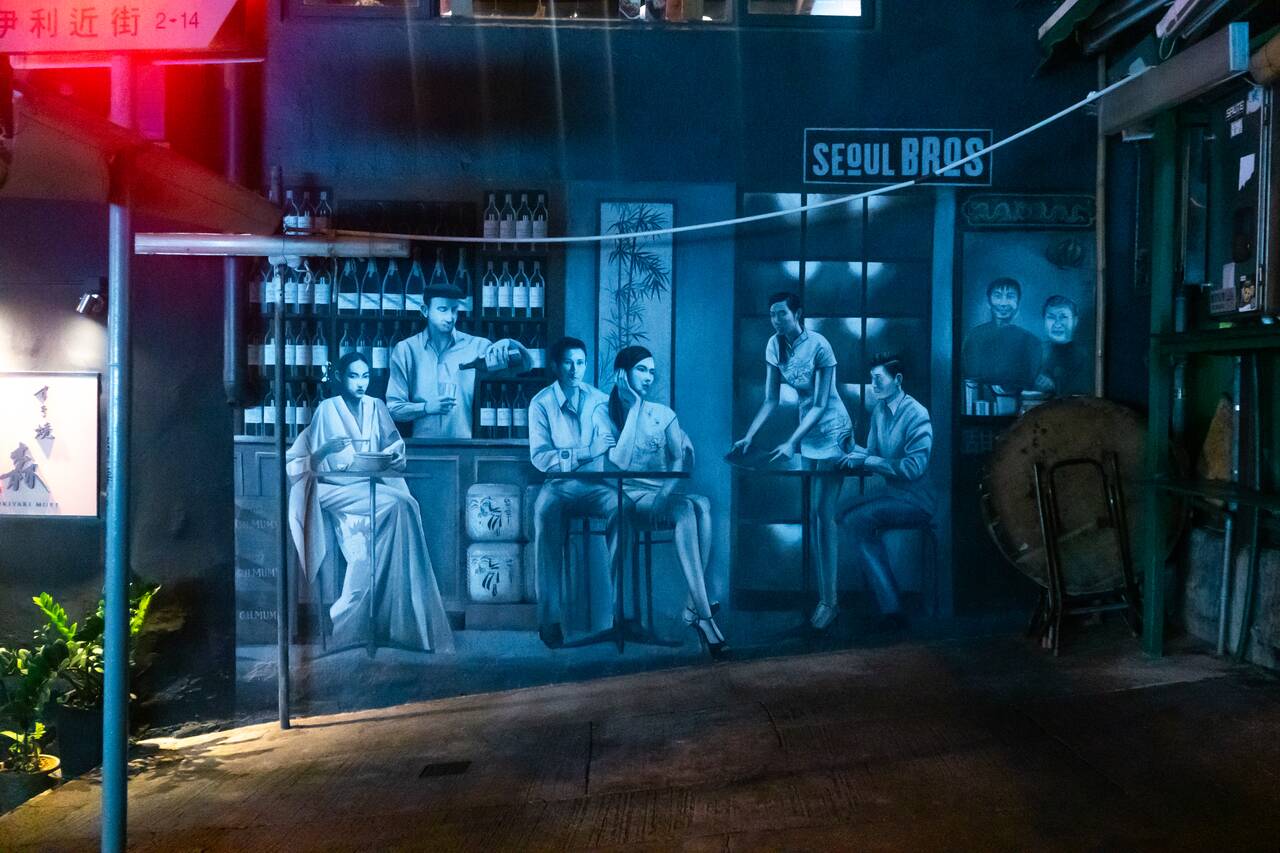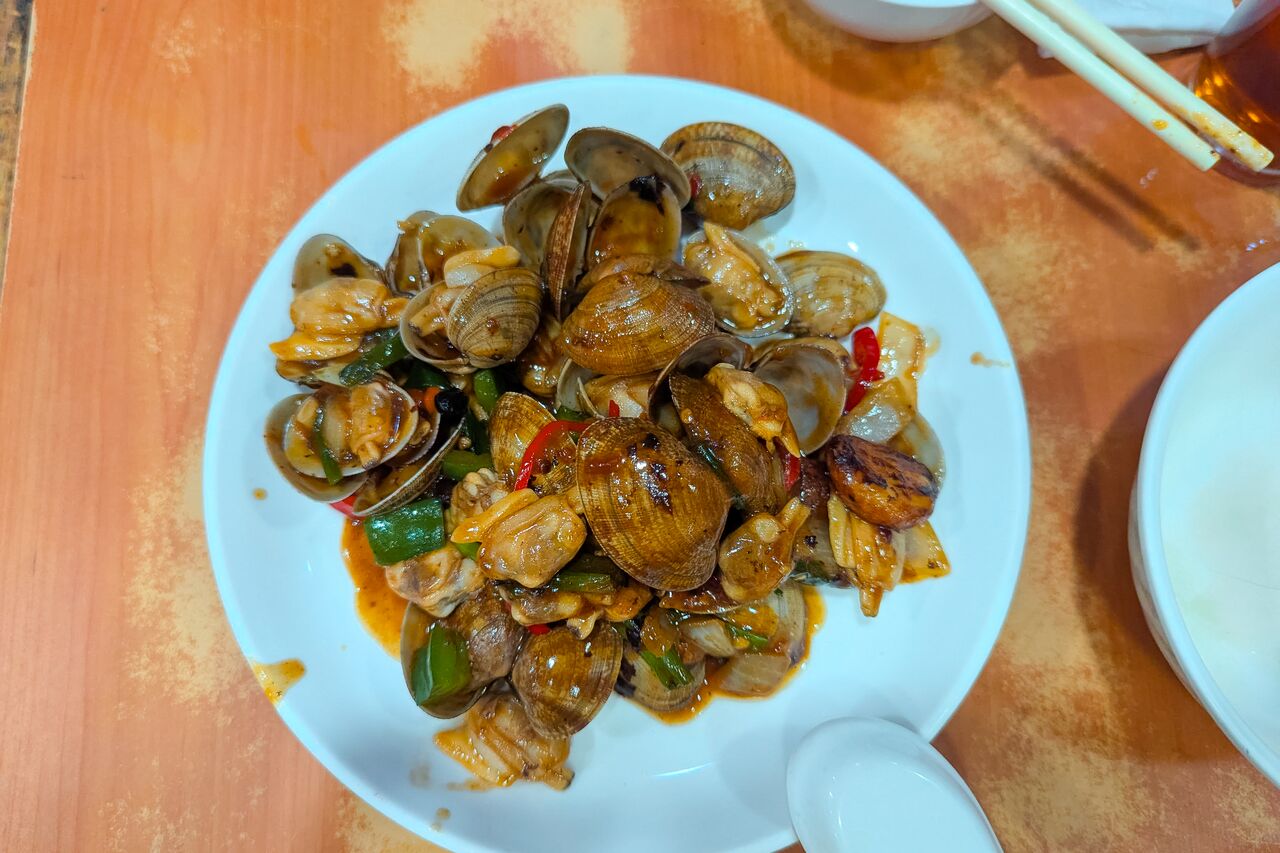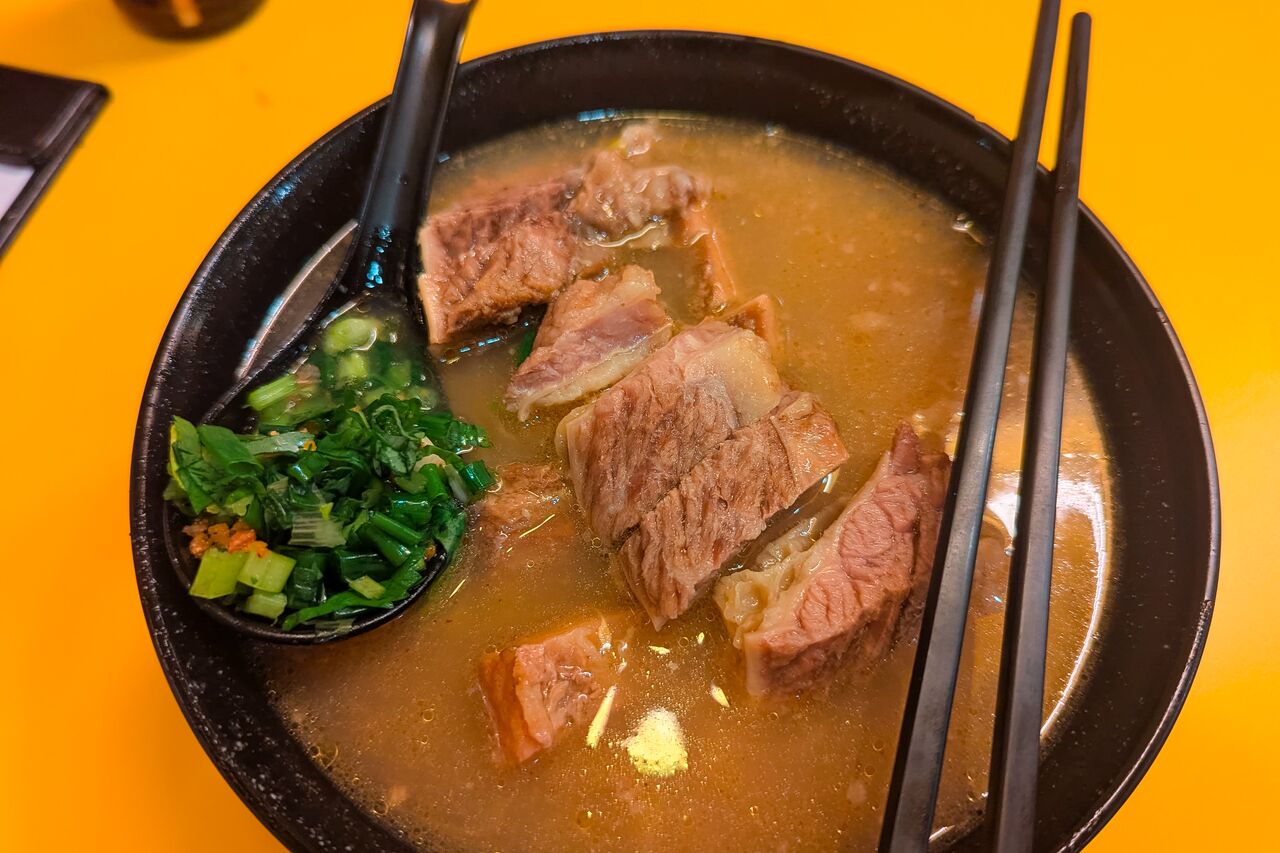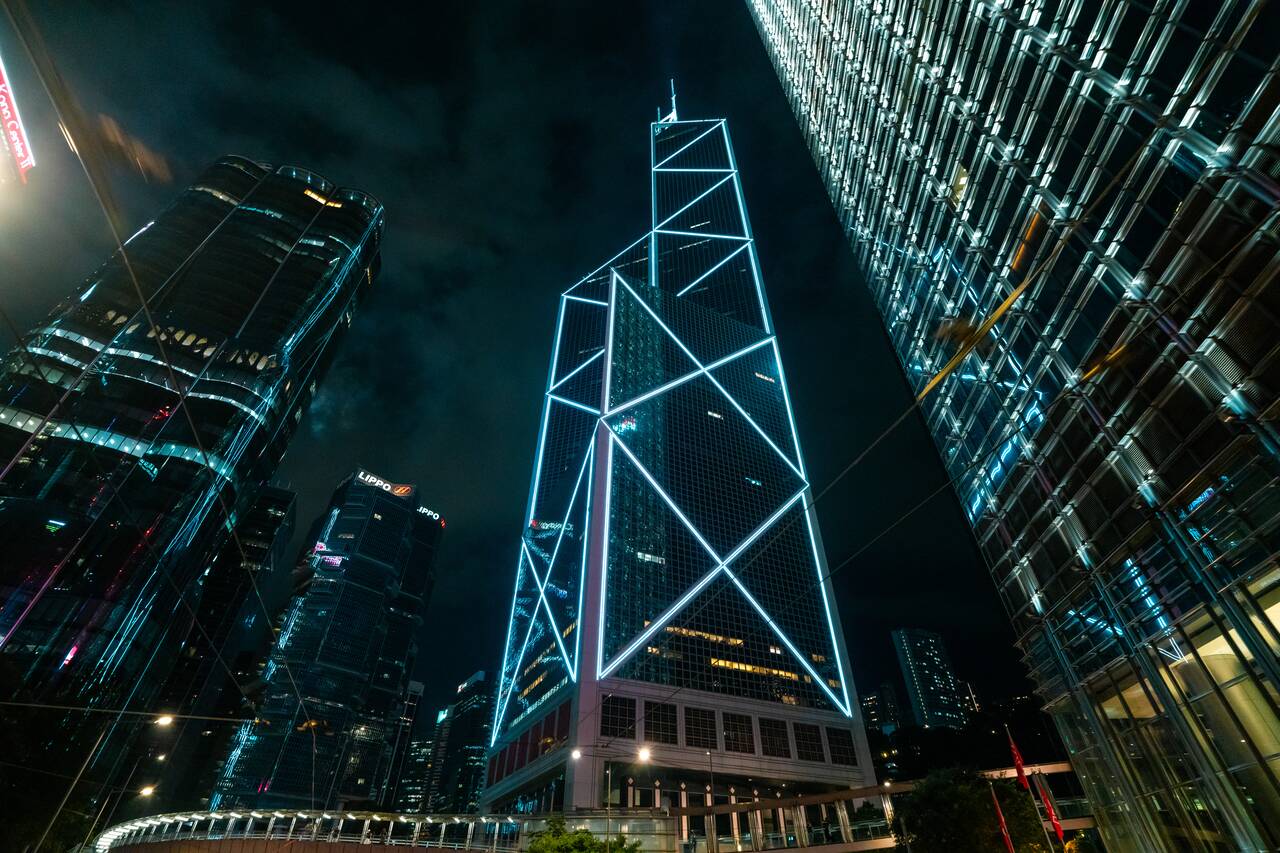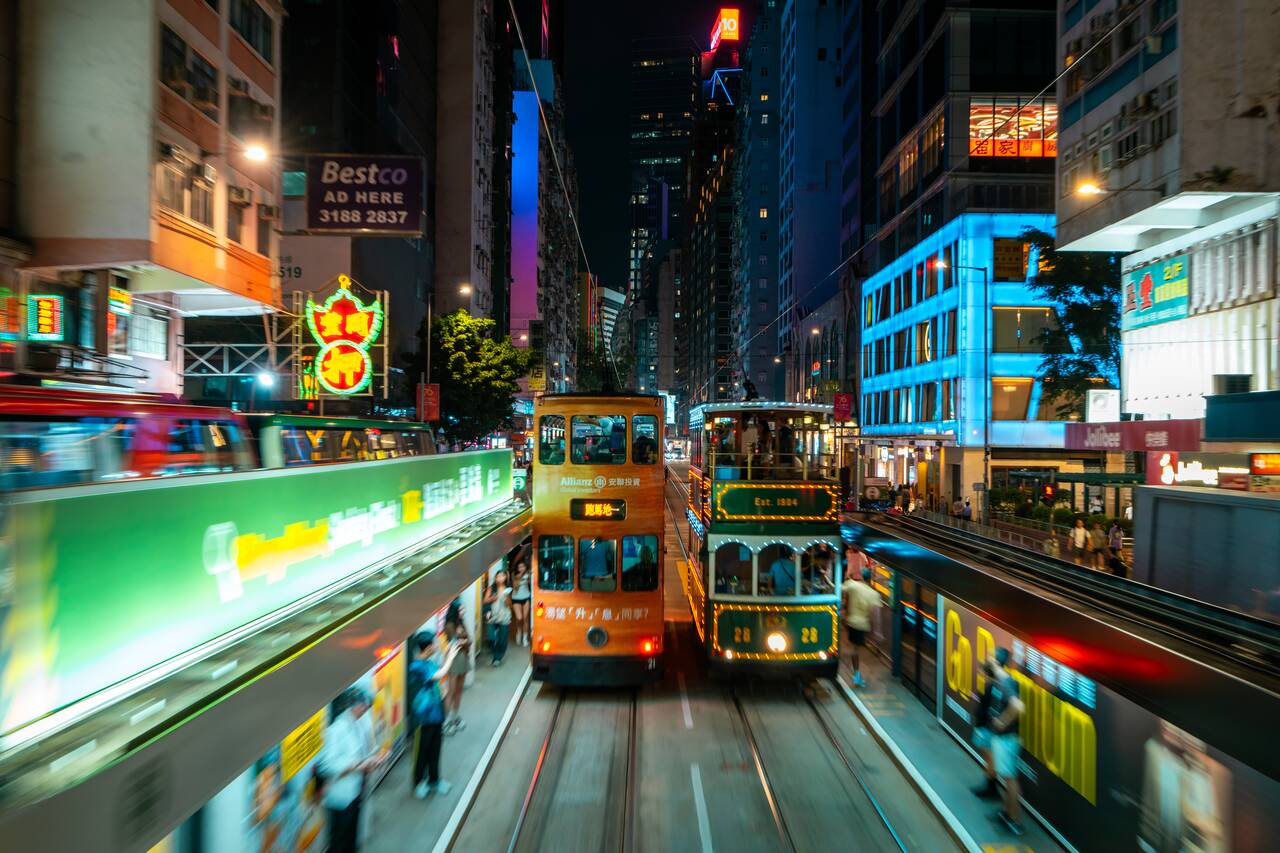Thanks to its geography and long history of British influence, Hong Kong is possibly one of the most unique cities in the world, with its crowded skyscraper skylines, vibrant street life, and lush green hills and mountains. The city feels both chaotic and orderly at the same time, and no matter how many times I visit, it always surprises me with its ever-changing energy and character.
This is my third time visiting the city, and I’m here to guide you through some of its best things to do, places to eat, and so much more. So without further ado, here are the 12 best things to do in Hong Kong, and all the information you need to plan the perfect trip!

- Hong Kong Things to Do Map
- Where to Stay in Hong Kong?
-
12 Best Things to Do in Hong Kong
- Go Up Victoria Peak
- Watch the City Lit Up at Victoria Harbour
- Stroll Along the Avenue of Stars HK
- Go on a Day Trip at Visit Tian Tan Buddha
- Enjoy a Peaceful Walk at Nan Lian Garden
- Visit Sik Sik Yuen Wong Tai Sin Temple
- Explore Kowloon Walled City Park
- Take Photos at Choi Hung Estate & Yick Fat Building
- Attend One of the Many Street Events
- Learn About the History of Hong Kong at Hong Kong History Museum
- Hang Out at Tai Kwun
- Enjoy the Nightlife at Lan Kwai Fong
- What to Eat & Drink in Hong Kong?
- How to Get to Hong Kong?
- How to Get Around Hong Kong?
- What to Pack for Hong Kong?
- Further Reading for China, Hong Kong, and Macau
Hong Kong Things to Do Map
12 Best Things to Do in Hong Kong
1. Go Up Victoria Peak
One of my favorite viewpoints in Hong Kong is definitely Victoria Peak, a 552-meter-high mountain with an epic vantage point over Hong Kong and its extravagant skylines. It is also one of the most accessible peaks in Hong Kong with a few ways you can take to get up there.
The first and most popular way to reach Victoria Peak is by taking a tram from this tram station in Central. The ride follows a scenic route, climbing steep slopes with spectacular views along the way. Sounds nice on paper, right? But to be honest, it was a nightmare when I tried to go up in the evening, just before sunset.
Because the tram is slow and has limited capacity, the queue at sunset was outrageously long. When I was there, the wait time was nearly 2.5 hours, and the line stretched so far that it spilled out of the station, snaking under a nearby bridge and beyond.
- Hi Backpackers (Hong Kong Hostel Group) (Budget)
- Eco Tree Hotel Causeway Bay (Mid-Range) 👍 Top Pick
- The St. Regis Hong Kong (High-End)
- Big Bus Hong Kong Open Top Hop-On Hop-Off Sightseeing Tour (1 hour)
- Hong Kong Self-Guided Audio Tour (1 hour)
- A Perfect Hong Kong Layover - 5h private tour (5 hours)
For a 10-minute ride, a wait time of 2.5 hours was way too much for me, and it was so bad that I ended up throwing away my tram ticket for that day and had to revisit again another day. It was awful and an expensive lesson to learn, so do not make the same mistake as I did.
First and foremost, avoid visiting Victoria Peak at sunset. It gets extremely crowded and, in my opinion, isn't worth the hassle. There are other great spots to catch the sunset, like the Lion Rock Hike or simply enjoying the view from the pier at Victoria Harbour.
If the tram doesn’t appeal to you, you can skip it and take an Uber up instead. It’s faster than waiting in line for the 10-minute ride and can even be cheaper if you’re traveling with two or more people. If you do want to experience the tram, go during the day rather than in the evening as the line starts forming around 3 PM, and in my opinion, it’s not worth wasting hours just for the sunset, which you can enjoy from other spots as well.
Also, skip the Sky Terrace 428. You can easily enjoy the same views for free at Victoria Peak's Lions Pavilion, just a short walk from the tram station. The views are just as stunning, and it won’t cost you a thing! For a quieter experience, you can also hike along the Peak Trail to escape the crowds and take in the scenery in peace.
If you take a taxi, you can go up Victoria Peak anytime you like as most areas are open 24/7. If you want to take the tram, the tram opens at 10 AM to 10 PM on weekdays and 8 AM to 10 PM on weekends. The tram ticket is 76 HKD for a single trip and 108 HKD for a round trip. If you insist, you can get the tram ticket in advance here: get tram ticket.
Where to Stay in Hong Kong?
2. Watch the City Lit Up at Victoria Harbour
Hong Kong's skyline is legendary, and there’s no better place to enjoy it than from Victoria Harbour, where you can capture a stunning panoramic view of the city’s finest skyscrapers in a single frame.
The scene is especially magical at sunset and into the evening when the city lights up with dazzling displays and the harbor comes alive with river cruises and traditional junk boats gliding across the water, creating an unforgettable spectacle.
You can come to the harbour about an hour before sunset and go and check out some of the tourist attractions nearby like the Kowloon-Canton Railway Clock Tower, one of Hong Kong's iconic landmarks. You can stroll along the Avenue of Stars HK, and once you are done, you can go up the elevated bridge over the pier, find a place to sit, and enjoy the wonderful light shows at sunset.
There are also many museums around this area, such as the Hong Kong Cultural Centre, where you can explore art galleries and installations; the Hong Kong Museum of Art, showcasing beautiful Chinese art, sculptures, and drawings; or the Hong Kong Space Museum, where you can enjoy planetarium shows, astronomy exhibits, and more.
Tickets are also very affordable and can be purchased on-site. As you can see, there are quite a lot of things to do around this area, so be sure to spend some time and explore Victoria Harbour when you are in Hong Kong.
3. Stroll Along the Avenue of Stars HK
While you are hanging out at Victoria Harbour, be sure to drop by and check out the Avenue of Stars HK, a famous promenade that runs along the Tsim Sha Tsui waterfront which was modeled after the Hollywood Walk of Fame. It celebrates Hong Kong’s rich film industry and honors legendary actors, directors, and filmmakers who have contributed to the city’s cinematic history.
You can see handprints of famous stars, statues (including a prominent Bruce Lee statue), and plaques highlighting the achievements of iconic figures in Hong Kong cinema throughout the promenade. You can also take photos with the famous Hong Kong Film Awards Statue here as well.
I was born and raised in Thailand, and Hong Kong film stars like Stephen Chow, known for "Shaolin Soccer" (one of my favorite films of his), Jackie Chan, and Michelle Yeoh were hugely popular there. It was amazing to see their achievements immortalized here. Even if you’re not familiar with Hong Kong films, you can still enjoy the stunning view of the harbor from this spot, so be sure to go and check it out.
4. Go on a Day Trip at Visit Tian Tan Buddha
One of the most impressive landmarks in Hong Kong is Tian Tan Buddha, also known as the Big Buddha. This monumental bronze statue on Lantau Island is about a two-hour metro and cable ride from Central, which makes for a great half-day trip to take when you are in Hong Kong.
Standing 34 meters tall, it is one of the largest seated outdoor Buddha statues in the world. You can visit the temple and climb the statue for stunning views of Hong Kong’s beautiful mountain surroundings and the South China Sea.
The site also includes the Po Lin Monastery with its beautiful temples, pavilions, and sacred Buddha statues to explore. There are restaurants and shops nearby to make your visit more comfortable. The area is quite large, and it will take some time to see all of its attractions. Expect to spend at least 2–3 hours here, not including travel time, which adds another 3–4 hours for a round-trip journey from Central.
The metro will take you to the cable car station where you will then have to purchase a separate ticket to get to the temple ground. I highly recommend you purchase the ticket in advance from here to avoid having to line up and queue at the ticket booth, which can be pretty long.
I was there during the Golden Week, which sees a large influx of mainland tourists to Hong Kong, but with the pre-booked ticket, I was able to get on the cable car without having to wait very long. The pre-booked line flows very fast (way better managed than the Peak Tram if you asked me), and I was at the temple in about 30 minutes. So don't forget to get the ticket beforehand!
The views from the cable car are absolutely incredible! You can see the dramatic landscape of Hong Kong as you ascend up the mountain. You might even spot planes taking off and landing, as the cable car is not far from the airport. The temple is open daily from 10 AM to 5:30 PM, and the cable car may close in bad weather, so be sure to plan your visit accordingly.
5. Enjoy a Peaceful Walk at Nan Lian Garden
Hong Kong can be pretty overwhelming at times with its bustling streets and busy attractions. If you’re looking for a place to take a break from it all, I highly recommend checking out Nan Lian Garden, a beautiful Chinese garden with stunning temples that feel more like Japan than Hong Kong.
Designed in the Tang Dynasty style, the zen garden features meticulously manicured trees, elegant wooden pavilions, lotus ponds, rock formations, and waterfalls, creating a peaceful oasis amidst all that's going on in the bustling city surrounding it. It’s a perfect spot for a peaceful morning stroll as you make your way from one beautiful pavilion to another.
The temple is located at the foot of Diamond Hill and can be easily reached by metro or bus from Central. It's one of my favorite places in Hong Kong, offering a completely different experience from the other attractions I recommend here.
The garden is quite large, with plenty of photo spots, attractions, and walking paths to explore, so expect to spend at least an hour or two here. It is open daily from 7 AM to 9 PM, and entry is free. If you’re looking to escape the hustle and bustle of Hong Kong, this is the perfect place to do it!
6. Visit Sik Sik Yuen Wong Tai Sin Temple
One of the most sacred temples you can visit in Hong Kong is Sik Sik Yuen Wong Tai Sin Temple, a large and highly revered temple located in the Wong Tai Sin district, not far from Diamond Hill and Nan Lian Garden. Here, you’ll see both worshippers and tourists seeking blessings for health, fortune, and success.
The complex features colorful traditional architecture, ornate carvings, and beautifully landscaped gardens where you can walk around while enjoying the lively atmosphere as people from all over the world pay respect to Wong Tai Sin, a legendary Taoist deity this temple was dedicated to.
You’ll see people performing traditional rituals such as lighting incense, making wishes, and consulting fortune tellers. Many Buddhists, including Thai tourists, come here to pray for fortune and wealth. I personally don’t follow these traditions, but it’s always fascinating to watch the rituals in person.
Even if you don’t participate, I think you’ll find it very interesting to see. Otherwise, the beautiful Chinese architecture alone is enough to keep you engaged while you’re here. To get here, you can easily take the metro or bus from anywhere in the city and you should arrive right at the entrance of the temple.
The temple is open daily from 7:30 AM to 4 PM, and entry is free. Unlike the peaceful Nan Lian Garden, this temple is the opposite of peaceful, with lively crowds, offering another cool aspect of Hong Kong that you can't see anywhere else, so be sure to drop by here while you are visiting Hong Kong.
7. Explore Kowloon Walled City Park
One of the most fascinating aspects of Hong Kong's history is the notorious Kowloon Walled City, where lawlessness, crime syndicates, and all kinds of illegal activities thrived inside overcrowded buildings that ignored any building codes. The structures were interconnected by maze-like alleys that even local police and tax collectors dared not enter.
At its peak, it was home to over 30,000 residents packed into just 6.4 acres, making it one of the most densely populated places on Earth. The area was largely controlled by triads, and the lack of government oversight meant there were makeshift shops, clinics, and workshops squeezed into narrow corridors.
Despite its lawless reputation, it was also a self-contained community with its own schools, temples, and daily life. In 1993, the Hong Kong government began demolishing the Walled City, and by 1994, the site had been cleared. It was transformed into Kowloon Walled City Park, which opened in 1995. Today, the park is a peaceful historical and cultural space that contrasts sharply with the chaos of the old Walled City that once stood in its place.
You can visit the park and enjoy a nice, peaceful walk along its pathways crisscrossing around the Chinese-style garden. Along the way, you will be able to see several historical remnants from the original Walled City, including parts of the South Gate, remnants of the watchtower, and some foundation walls, which help you visualize the original layout.
When I was there, there was a 3-year exhibition that recreated some parts of the overcrowded Kowloon Walled City that provided a much-needed context of what it was like to live inside the walled city, and the exhibition was excellent. They have recreated places like an unlicensed dental clinic, an old-school salon, and make-shift restaurants and shops you can walk around in.
One of my favorite features is the simple hallway lined with a tangle of wires hanging from the ceiling, surrounded by exposed, rusty pipes that once kept the city running. It gives a rare glimpse of what life inside the Walled City was like, something we would never have seen firsthand.
The exhibition is said to be running for three years, but who knows, they might decide to make it permanent, which I think would be an excellent idea, as it’s the best way to provide context to a place that no longer exists. The park is open daily from 6:30 AM to 11 PM, with the exhibition running from 9 AM to 7 PM. Entry to both the park and the exhibition is free. If you’re interested in learning more about the history of Kowloon Walled City, be sure to visit the park.
8. Take Photos at Choi Hung Estate & Yick Fat Building
If you’re into urban photography, some of the most popular and unique spots in Hong Kong are Choi Hung Estate and Yick Fat Building, both easily accessible by metro. They offer distinctive photo opportunities you cannot find anywhere else but here.
First and foremost, Yick Fat Building, located in Quarry Bay, is one of the city’s most iconic examples of dense, high-rise residential architecture. Its tightly packed apartments, colorful exterior, and repetitive geometric patterns make it a favorite spot for photographers and filmmakers looking to capture Hong Kong’s urban vibe.
The building gained quite a recognition after appearing in various movies, advertisements, and of course, on Instagram, often framed in a way that emphasizes its towering, almost cyberpunk look and feel. The locals there, who were mostly Bangladeshis, are very friendly and nice as well. They were wondering why their buildings were so popular among tourists, which I thought was pretty cool.
Another famous spot is Choi Hung Estate, one of Hong Kong’s most famous public housing complexes, located in Wong Tai Sin. Completed in the 1960s, its name literally means “Rainbow Estate”, and it lives up to that name with brightly painted apartment blocks in vivid colors, set against a colorful basketball court, which makes a perfect backdrop for photography.
If you have a day to spare in Hong Kong and are looking for something fun, be sure to check out Choi Hung Estate and Yick Fat Building to snap some cool urban photos. It’s a great way to pass the time while experiencing a more typical side of Hong Kong that is off the usual tourist trail.
9. Attend One of the Many Street Events
If you happen to be in Hong Kong during one of its many seasonal festivals like Tai Hang Fire Dragon Dance, which is often held during the first week of October, you are in for quite a treat. I accidentally stumbled upon the event via the official Hong Kong event page, which is a great way to find local events to attend, and it was incredible!
The festival features a massive dragon made from straw and covered in lit incense sticks, which snakes through the streets to ward off evil spirits and bring good luck. Locals carry the dragon through winding alleys while drumming and chanting, creating quite a spectacle. I had an absolute blast photographing the entire event.
The tradition dates back over 100 years and has become an important cultural heritage event, drawing both locals and tourists who want to witness one of Hong Kong’s most visually striking festivals. This particular event is held in Tai Hang District and lasts from 7 PM to 10 PM.
There was also a lantern festival going on next to the actual parade where you can enjoy the beautiful lantern art installations, try delicious street food, and more. It was a hoot, and I'm glad I managed to witness the event before I leave the city.
If you’re visiting Hong Kong in early October, try to time your trip to coincide with this event. If not, be sure to check out other fun activities on the official Hong Kong events page. Attending these festivals is a unique way to experience the city and its vibrant culture, but be prepared for large crowds!
10. Learn About the History of Hong Kong at Hong Kong History Museum
If you are interested in learning about the history of Hong Kong, you might also want to check out Hong Kong History Museum, located in Tsim Sha Tsui, about a 20-minute walk from the iconic Clock Tower. It's a great place to help you understand the rich and complex history of the city.
The museum features immersive and well-curated exhibitions covering Hong Kong’s natural history, cultural heritage, and social evolution, from prehistoric times to the modern era. There is also an exhibition dedicated to China and Hong Kong's relationship, showing how it integrates Hong Kong into its one country two systems initiative, which many westerners may find a little too on the nose.
If you look past that and go through the exhibition, you will eventually run into the “Hong Kong Story” permanent exhibition, which is my favorite of all. It uses life-size reconstructions, artifacts, and multimedia displays to bring the city’s past to life, including the days of fishing villages, colonial influences, and rapid urban development.
The museum itself is quite big, so expect to spend around 1-2 hours to see all of its exhibitions. The museum is open from 10 AM to 6 PM daily, except on Tuesdays, and the entry is free. If you have time to spare and would like to learn more about Hong Kong, be sure to check out the Hong Kong History Museum.
11. Hang Out at Tai Kwun
Tai Kwun is a revitalized heritage and arts center that was once the city’s Central Police Station, Magistracy, and Prison. The site has been beautifully restored and transformed into a vibrant cultural hub, blending history, art, and contemporary creativity, attracting a lot of creative youths and tourists to the historic site.
While at Tai Kwun, you can explore historical architecture, learn about Hong Kong’s colonial and judicial past, and enjoy rotating art exhibitions, performances, and cultural events. You can even walk inside the old prison to learn about the people who worked there, the events and crises that shaped the city’s history, and much more.
Tai Kwun also features stylish cafes, restaurants, and boutique shops where you can relax and enjoy the vibrant and creative vibe of the place. It makes for a great afternoon visit if you are looking for cool things to do near Central. The place is open from 8 AM to 11 PM daily, and the entry is free.
12. Enjoy the Nightlife at Lan Kwai Fong
If you are looking for a great night out spot, you can't go wrong with Lan Kwai Fong. The place is known for its vibrant atmosphere, bars, restaurants, and clubs. The area comes alive in the evenings and on weekends, attracting both locals and tourists looking to enjoy drinks, live music, and a lively social scene.
Lan Kwai Fong is especially famous for its street parties during festivals such as Halloween and New Year’s Eve, when the narrow streets are filled with people celebrating. So, if you happen to be here during these periods, be sure to drop by and check out what's going on at Lan Kwai Fong.
Beyond nightlife, the district also offers a variety of dining options, from casual eateries to upscale restaurants, so if you are looking for a nice place to go fine dining here, Lan Kwai Fong is also a great place for you.
What to Eat & Drink in Hong Kong?
1. Eat Dinner at Kwan Kee Claypot Rice
Kwan Kee Claypot Rice is one of the most popular claypot restaurants in Hong Kong. Thanks to my friend who has been living in Hong Kong for the past 8 years and took me to this place for dinner one evening, I was able to get a table early and tried their crispy claypot rice, and it was awesome.
Of course, this place is famous for its traditional claypot rice dishes. Served piping hot in individual claypots, the rice is infused with rich flavors from ingredients like Chinese sausages, chicken, mushrooms, and vegetables, often with a deliciously crispy layer at the bottom that I really love.
The place can get very crowded quickly with long queues forming around dinner time, so if you want to get a table immediately, I highly recommend you come here at the opening time of 5:30 PM. My friend arrived there at the opening time and was able to secure a table for us.
They are quite fast with other menus but the claypot rice can take about 30 - 40 minutes to be done, so I highly recommend you order some side dishes while you wait for the famous dish. The place is open from 5:30 PM to 10 PM every day, which makes for a great local dinner spot while you are here.
2. Eat Lunch at Aberdeen Fish Ball King
For a nice and quick lunch or dinner, I highly recommend you try the fish ball noodles from Aberdeen Fish Ball King. They have many restaurants around Hong Kong, but I tried the one near my hotel in Fortress Hill and it was great.
The egg noodles come with a variety of toppings, from beef brisket to different types of fish balls. The dishes are surprisingly affordable, served quickly, and you can season them however you like. I often visit this place when I want a quick, budget-friendly, and satisfying meal to keep me going for the day.
The restaurant is typically open daily from 9 AM to 12 AM. They only accept cash, so be sure to have some on hand. I especially love their fish balls, and if you're looking for a quick and tasty noodle fix, this is the place to go.
How to Get to Hong Kong?
By Plane: The fastest way to get to Hong Kong is to fly into the country directly via Hong Kong International Airport (HKG), one of the most popular travel hubs in Asia. You should have no trouble flying here via airlines like Cathay Pacific and AirAsia, which have excellent coverage all over the world.
You can find cheap flights to Hong Kong from Trip.com, Skyscanner, or Expedia.
By Ferry: If you are in Macau, you can also take a high-speed ferry from Macau Outer Harbor to Hong Kong Macau Ferry Terminal. It costs around 200 HKD and takes a little under an hour. You can book the ticket in advance here.
By Bus: If you can spare some time and would like to save a bit of money, you can also travel from Macau to Hong Kong by bus from several spots in the city. The bus will take about 3 hours in total as you will have to go through 2 immigrations, and it should cost about 150 HKD. You can also book the ticket in advance here.
By High Speed Train: If you are in China, you can also take a high-speed train from any of the major cities in the South like Shenzhen and Guangzhou. It costs around 30 USD and takes a little over an hour. You can book the ticket in advance here. You will clear immigrations for both China and Hong Kong when you get off at West Kowloon Station.
How to Get Around Hong Kong?
By Metro: Hong Kong has excellent metro coverage, and you can get just about anywhere with it. It’s extremely accessible and convenient, with payment just a quick tap of your credit card. A single journey usually costs around 6 HKD per person.
By Bus: Buses are also a great option if you prefer a direct ride without transfers. I took one from Fortress Hill to Kowloon in a single trip, which was super convenient. You can even pay with a credit card, which is awesome. Most routes cost around 2.6 HKD, while the Airport Express buses range from approximately 35 to 50 HKD.
By Tram: If you’re staying on Hong Kong Island, you can also use the vintage trams to get around. They’re slow and a bit clunky, but perfect for photos, especially at night when the streets and skyscrapers are lit up. A single ride costs about 3.30 HKD. While some trams accept tap-to-pay, the older ones might not, so it’s best to have the exact cash on hand for the ride.
By Uber: If you’re looking for a more comfortable ride, you can also opt for Uber to get around Hong Kong. It’s more expensive, but not as much as you might think. I took a taxi up and down Victoria Peak, and it ended up being cheaper for two people than taking the tram. Plus, we didn’t have to queue for the tram. Win-win!
What to Pack for Hong Kong?
As you may already know, I am an advocate of light traveling, and indeed, packing light for a journey like this is a unique art form. Here are some packing tips for your upcoming trip to Hong Kong:
- Walking/Hiking Shoes: With all the walking and possible hiking during your travel, a comfortable pair of shoes is a must. I recommend the Timberland 3-Eye Classic Boat Shoes that are my go-to pair for long strolls and hikes.
- Breathable Shirts: Given the potential for hot weather, pack a few breathable shirts for your outdoor adventures.
- Shorts/Jeans: Anticipate lots of walking during your travels? Be sure to pack some breathable shorts and a pair of Levi's jeans for when the weather cools. For women, leggings are excellent for both hot and cold climates, so consider packing some as well.
- Outer Shell Jacket: An outer shell jacket is great for windy or rainy conditions. I highly recommend the Columbia Watertight Jacket (for women). It's lightweight, breathable, and even comes in a cool orange color.
- Microfiber Towel: A Microfiber towel is the ideal backpacker's towel due to its lightness, quick drying, and compressibility.
- Swim Suits: A swim trunk is a must-pack item if you are planning to visit Hong Kong in the summer, just in case there is a body of water you can jump in.
- Camera: You should also pack a good camera for your trip so that you can capture all the beautiful experiences you might have. I recommend the Sony a7R V camera together with the Sony 24-70mm f2.8 GM II lens, which is probably the highest-performance camera and lens combination you can get right now.
- Power Bank: Keep your electronics charged on the go with a 20,000+ mAh Power Bank.
- Water Bottle: The Hydro Flask Trail Water Bottle is a great insulated water bottle to have with you in cities or on hiking trails. It is lightweight and can keep your water cold or warm for more than 12 hours. It's a total game-changer.
- Universal Adapter: You'll need just one universal adapter to plug in your electronics in any country you visit.
- Packing Cubes: Packing Cubes will help you save space in your backpack and keep all your belongings organized.
- Daypack: The Langly Alpha Globetrotter is my go-to everyday camera backpack. It's large enough to carry all my travel gear, and it comes with plenty of slots and pouches. Plus, it's stylish as hell!
- Large Backpack: You will need a large backpack to carry all of your stuff. I recommend the Osprey Atmos AG 65L backpack. With excellent weight distribution and a lifetime guarantee, you can't go wrong with Osprey.
For more information on what I pack in my backpack for this trip, check out: My Packing List: 60 Travel Essentials.
Now that we have all the information we need, it's time to start planning your trip! Here are some resources to help you get going:
Are you planning to travel independently? Be sure to check out my guide on How To Plan A Backpacking Trip here.
Further Reading for China, Hong Kong, and Macau
Looking for more information about your trip to China, Hong Kong, and Macau? Here are a collection of articles that you might find useful:
- Want to spend 5 days in Hong Kong? Here's a complete itinerary for you: Hong Kong in 5 Days: A Backpacker's Itinerary.
- Macau is often called the Las Vegas of Asia, offering larger-than-life entertainment, a unique blend of Portuguese heritage, and so much more. If you’re planning a visit, be sure to check this out: Discover Macau: 10 Cool Things to Do & More.
- Guangzhou is the fourth-largest city in China and one of the wealthiest, with major trade activities taking place in and around the city for over 2,000 years. With so much history and so many places to explore, you’ll definitely want this comprehensive travel guide: Explore Guangzhou: 12 Incredible Things to Do & More.
- For more articles about China, visit the China travel guide, or explore my guides to Hong Kong and Macau.
- Planning a trip to East Asia? Explore all my articles on the East Asia Travel Guide page.
- You can find all my Asia-related articles here: Asia Travel Guide.
- For more of my travel guides like this, visit my Destinations page.
Disclosure: This post may contain affiliate links.
